A Life in Art
A Conversation with International Gallerist, Curator & Podcast Host
Today, the world is very divided, lots of fractures. It is the time for art and culture to come into play because art is about soft power. If we want to resolve misunderstandings, art is the best, best, best way to communicate. So use this.
A Conversation with Author DOUG WOODHAM
Fmr. President of the Americas at Christie’s · Managing Partner, Art Fiduciary Partners
All of the great artists are there for a reason: because they rebelled in some way. They created a visual vocabulary that felt fresh and new, which excited people. So, the great artists are not built on sort of anthills of sand. They're built on things of substance and of meaning. Though this is not a sufficient condition to become an icon, it's a necessary but not sufficient condition. I think you have to have an interesting and vivid personality or personal narrative that makes you interesting for people to talk about and want to learn about. I think you also have to have a support network of galleries, curators, and collectors who are excited about your work and want to push it forward, not wanting it to be forgotten. Basquiat's visual vocabulary is distinctive and stands out relative to what was being done in the 1980s. That's the sort of strong hill on which his reputation is built. Basquiat benefited from being the first black artist of note who got pushed forward. As in many things, the first benefits.
Everything is Art.
Everything is Politics.
I think art competes with reality. And art will give you the last words.
–AI WEIWEI
A Conversation with Manager of Digital Media AMR HUSSEIN
Guggenheim Abu Dhabi is a unique concept. The idea behind the building itself is a dance. It's a living building because it's a dance between spaces. It's a dance between blocks of spaces and shapes and cones, and it's inspiring for the future because the legacy is a huge factor for every project. It's the legacy for young architects and for other architects. It gives them the space to dream more and to feel like it can be possible, and not to be shy. Present more bold ideas that can inspire creativity because you can't see this building and walk in without feeling like you want to be creative as well.
ERIC FISCHL’s Couples explores the secret life of suburbia at SKARSTEDT PARIS
October 20 – December 6, 2025
Fischl’s work explores the darkness inside suburbia. Desire, betrayal, and the search for connection. The violence of privilege. What happens when you’re surrounded by everything and yet have nothing left to give one another? What happens when what you own ends up owning you? Autopsies of the American dream: the suburb as an emotional landscape. Roadsides, hotel rooms, beaches, private homes with the chlorine-scented promise of a swimming pool. They are places built for temporary perfection or maintaining an outward-facing image.
Artist MIA FUNK discusses her Creative Process
I feel my paintings are shaped by my life and the people I’ve met along the way. We’re all part of the same human story. And I’ve always loved learning and sharing with others. And hopefully, you can see echoes of this in the art. I love to dance. And try to write every day.
I grew up in an artistic community and like to blur the boundaries between disciplines because I believe that’s where creative ideas arise. These conversations have helped shape me. I’ve always been drawn to art that begins a dialogue. I want to express what I see and feel and share what others know about the world.
At the end of the day, for me, it’s about the search. How do we stay open and curious? And I believe that remains one of our great challenges. How do we hold on to that sense of wonder and remember that we live in a miracle that we are a part of, and that we have the ability to either nurture or destroy? And so many people that I’ve had the chance to speak with have held on to that sense of wonder, and what can be achieved individually and collectively with the life we’re given. You can hear it in their voices. You can see it in the projects they create and the way they inspire others. Somehow, they’ve managed to remain curious, which is at the heart of the creative process.
JAMES TURRELL’s The Return Transforms Perception at PACE
Seoul · June 14 – September 27, 2025
Where does the edge of space end and your perception begin?
We don't see the world as it is, we see it as we are.
What if I could touch time? Turn light into matter?
Everything that is visible hides something that is invisible.
What would we see if we could return to the beginning?
Before presence and absence, before light and darkness, before sound and silence?
How Deception is Sculpting Our Reality
A Conversation with Artist · Geographer · Author TREVOR PAGLEN
At the core of the work is that sense of curiosity, that sense of joy, that sense of beauty, and that sense of learning. I've been fortunate to have all kinds of strange and interesting experiences, whether that's seeing weird things in the sky over secret military bases in the middle of the Nevada desert, going scuba diving and finding internet cables on the bottom of the ocean, or tracking spy satellites in the sky and being able to predict when they'll appear in a flash against the backdrop of stars. The world around us is extraordinary and embodied, right? It is not on screens, and I’m very privileged to have that be so much a part of my process.
A Conversation with Photographer MARK HANAUER
I try to get people to stop, look, and think about what they are seeing, whether it's one of my portraits, a landscape, or a close-up of a flower. Design is important to me in my photographs, and my goal is to engage one's gaze and move it around and image, and hopefully tell a little abstract story within that moment.
Connecting Brazil and China Through Art and Music
A Conversation with Curator · Philanthropist · Collector SARINA TANG
I think that, based on the fact that both Brazil and China are tied to my own roots, I understand a little more about the culture and history of both countries. About 15 to 20 years ago, I felt that I didn’t want to work just for income or to gain more fame. I felt I should do something meaningful for the rest of my life. Very few people from Brazil have ever been to China. This is why I brought a few Chinese artists from China to Brazil and from Brazil to China. That was my first experience doing some form of residency, but it was more than a residency. It was really for the Brazilian artists to learn more about China and its culture, and for some of the Chinese artists to learn more about Brazilian art and culture.
Can silence be painted? How can artists capture interior states, solitude, and the passing of time? How are the homes we live in a reflection of the people who inhabit them? How can we read a painting to piece together the life of the artist?
The Soul Trembles
The exhibition at the Grand Palais offers visitors a poetic immersion into her unique universe, where threads weave stories of human connection and the ephemeral nature of life. The visitor is taken on a journey into an ephemeral world where they are posed fundamental questions about life and death. The threads you follow are up to you, and each visitor must answer that question for themselves. Where are we going? Are you ready for the journey? What is a soul? What do you believe? Why did you go on this journey? What gives your life meaning?
& The Future of Museums
A Conversation with NICOLA LEES · Director of the Aspen Art Museum
It's a complicated time to think about how we can slow down, be still, and bring a brilliant group of people together to do something that feels purposeful and can be productive. It's a moment where things are moving so fast. When I brought up the idea of a hinge generation, I think it's impossible to know how we will look back and reflect on this time and these moments. This year, there is a real emphasis on the relationship between the question we have posed for the retreat, which is fundamentally about our relationship with technology and identifying our relationship with the world and how we want to be present in the moment.
In Turrell’s chambers, there is no object to unveil. Light itself is astonishment.
A Conversation with Artist IAN BROOKS
Science figures out how the world works, but art explores our place in it and provides a personal, emotional response to it.
A Conversation with Artist HELENA TAHIR
In my project The Last Sector, I was drawn to archaeological artefacts, which became motifs in my drawings. These objects carry their own layered histories, but they also mirrored the way I was working; uncovering, assembling, and making sense of fragments.
A Conversation with Artist ANDERSON SANTOS
What I try to evoke in my work is not a definitive answer but an opening. I like to think of painting as a space of suspension, of subtle displacement, a sensitive interval where the gaze becomes both lost and found.
A Conversation with Artist LUCIANO CIAN
I think there's no time for art. Time is very relative when we're doing any artistic activity. This operation is complicated because you have to get used to a metric that defies reason.
A Conversation with Artist RUSLAN ASERKOV
My work is escapist by nature. In art, the highest manifestation of communication, escapism can also be an attempt at communication. The creative process for me is a way to return to where I came from without resorting to the services of death.
A Conversation with Artist SARA ARNAÙ
Still, my approach to paper has always been special and privileged, and it is its delicate manual nature that I like when I begin a new work. I always start by reasoning with that material. Then I also head elsewhere.
A Conversation with Artist BAKULA NAYAK
More than anything, I’m inspired by the layers of everyday life—by overlooked objects, repeated gestures, old letters, shared meals, and quiet acts of care. These ordinary details are often where the deepest meaning lives, and I try to let that guide the heart of my work.
A Conversation with Artist DOMINIC CHAMBERS
Clouds are a great poetic form, and the color they hold in their bodies has intrigued me for many years. This is one of the reasons I am so attracted to the activity of kite flying as a form of kinetic leisure. Kite flying facilitates reunion with our vision and the sky above us.
A Conversation with Artist TIM LOWLY
I don't recall ever not wanting to be an artist, so the movement in that direction was rather early on. I think that the context of thinking about art within a social/political/spiritual context led to a desire to make art that carried that intention into a representational art practice. I am biased towards an art that bends towards a purpose larger than simply making an aesthetically pleasing thing.
A Conversation with Artist NATALIE FRANK
I knew I wanted to be an artist at the age of 12. The feeling of drawing the figure, in real time, and using the body to tell stories was exhilarating. The arts tell us who we are.
A Conversation with Artist STEVEN PEARSON
How does one recognize the impact they have upon entering an existing space while also acknowledging one’s self-transformation through the process? I foreground my suburban middle-aged experience as I portray myself as an aging Hercules engaged in Quixotic chores. While my drawings are meant to ridicule the implied heroism of the mundane, yet sustained activities, they also interrogate my own role in maintaining suburbia’s protocols.
A Conversation with Artist CECILIA WHITTAKER-DOE
I remember falling in love with shadows. I had a rather heavy hand (something that was to be a thorn in my drawing teacher's side while an undergraduate). I just loved to get deeply involved in the darkness of charcoal. I think it was the medium that gave me pleasure. I still find myself searching for those places in my paintings; the deep, rich areas that nurture a kind of hope.
A Conversation with Artist LAUREN COHEN
I value the handmade and tactile process of painting or sculpting ceramics. For me, it’s essential that my mind and hand are fully engaged. There’s something irreplaceable about the physical act of making, the imperfections, the intimacy. That’s where meaning lives for me, and where human art continues to hold its power.
In response to James Turrell's Bridget's Bardo (2009)
By Henie Zhang
Bridget lit it up,
violet fire. To be in Bridget I light up
inside Bridget's love. I want
Bridget's love, chippable, blown up
on my heart,
when I am, the fruit,
existing, inside of it,
wanting its colors,
to turn
A Conversation with Artist REBECCA PERDUE
I purposely make my work using traditional hand skills and tools to underscore my somewhat Morrisian belief that the greatest endeavours of humankind are the works and knowledge of skilled craftspeople. I hope that people view my work and can appreciate the 'visible' hand of the artist.
A Conversation with Artist EBRU YILMAZ ÇAKMAK
Anyone who works with care and passion inspires me. A man sweeping the street with intention, or a woman composing a symphony—both move me deeply. I look at them and think, “I want to bring the same intention to my own work.”
A Conversation with Artist MICHELE XIAOYUN FAN
I didn’t arrive at this style until the end of the COVID pandemic. During that time, I became aware of life’s fragility and unpredictability—but also its fierce will to thrive when given the chance. Through my work, I hope people can feel both tenderness and the quiet force of life. I want to capture that resilient, life-affirming spirit.
A Conversation with Artist GIULIA BERRA
For sure, growing in a little wunderkammer—surrounded by books or by golden rugged landscapes, so different from my fields and rows of poplars—has been so formative. I recognize in me something like a naturalistic imprinting, but I also feel part of a bigger, great, interconnected unity.
A Conversation with Artist ALICIA GIMENO
What interests me is creating a space of silence, of pause, where each person can project something of their own. If someone stops, breathes a little more slowly, and connects with something intimate or essential, then I feel the piece has fulfilled its purpose. I work through gesture, rhythm, and material—and I believe all of that has the power to resonate beyond words.
A Conversation with Artist LORENZO LUGO MCKELVAIN
The concept of constant evolution or the memories that are invoked by experiencing something in nature can be so powerful. A flower that my grandmother loved, a place that takes you back to your childhood, smells that bring back a specific day in your life. Nature has a way of speaking to you directly.
A Conversation with Sculptor OCEANA RAIN STUART
Themes that continue to move through my work include the sacred feminine, archetypes, and the space between what is seen and unseen. I am drawn to what lingers in the body over time, how nature reflects our internal landscapes, and to the kind of truth that does not need explanation.
A Conversation with Artist GARETH BARNES
I was drawn to creative work very early on. I’m not sure why, as I didn’t have an obviously creative family at the time, but it was something that I naturally wanted to explore and experiment with. I spent a lot of time hanging out with friends at school break times, drawing imaginary characters, while at home, I messed around with photography and drawing from life. It was a mysterious compulsion.
A Conversation with Artist DEVON STACKONIS
I am not entirely without hope, but in order to hope and to instill a spirit of lasting change, we need to fully grasp just how dire the situation at hand is. My art practice, to me, seems to oscillate somewhere between meditation and mourning.
A Conversation with Artist PAUL COLLINS
I am a diarist artist who believes that making work about the small details of life is the only way to address the universal. I hustle, and at the end of the day if the only thing my viewers get is a sense that hustle (and thus change) is a possibility, then I am fulfilled.
A Conversation with Artist TINA HAGGER
I think the main feeling that I am trying to capture and convey is a sense of wonder. I see the feeling of wonder as essential to survival in the insane times we live in.
A Conversation with Artist EVA LAKE
One idea I continue to explore is the erasure of time. My women live throughout the centuries. They shift through time and because of this, they have their own power, their own governance. As a child I believed very strongly that I had been here before. Eventually I came to realize that art was the constant journey, the connection between the present and the past and the future. Everything lives in the same room.
Singer-songwriter · Documentary Filmmaker · Founder of The White Feather Foundation
Photographer/Author of Life’s Fragile Moments
I think a lot of joy comes from helping others. One of the things that I've been really focusing on is finding that balance in life, what’s real and what’s true and what makes you happy. How can you help other people feel the same and have a happier life? I think whatever that takes. So if that's charity, if that's photography, if that's documentary, if that's music, and I can do it, then I'm going to do it.
Sculptor · Environmentalist · Creator of Underwater Museums
The sculptures get claimed and almost owned by the sea. And the textures that form the patterns, all things that could never be reproduced by human hands. And it's entirely unpredictable in many cases. I go to some of the "museums" expect to see this type of colonization or this type of growth, and it's nothing like how I've seen it envisaged it. It's completely different. Other times something has been made at its home, and there's an octopus that's built a house around it, or there's a school of fish that have nestled within the formations. There have been many, many different surprises along the way. I first started in the West Indies on an island called Grenada, which has a tropical reef system. And I expected the works to be sort of colonized. And I knew hard corals took a very long time to get established, to build their calcium skeletons, but actually, they were colonized within days. We saw white little calcareous worms, pink coraline algae, and green algae literally appeared sort of overnight.
A Conversation with Artist RITA OSIPOVA
We had no access to culture—no museums, galleries, or even a cinema—but I believe that gave me even more freedom to imagine new worlds, read science magazines, and experiment with whatever I could find.
A Conversation with Artist GIULIANO AMEDEO TOSI
The core themes currently driving my work are human transformation, ecological consciousness, and the tension between transcendence and collapse. I’m deeply interested in how the human experience is reshaped by climate anxiety, AI, and social fragmentation. My art doesn’t offer answers—it creates spaces of reflection, vulnerability, and expansion.
A Conversation with Artist EMELINE TATE
When you look at my work as a whole, you can see the influence of my childhood. I use plaster to cast my letters, or I make handmade letters with papier mache, and I use bright, happy colors that are inspired by my youth.
A Conversation with Artist AZIN YOUSEFIANI
My artworks juxtapose different forms and concepts regarding my cultural identity, in which a part of me is always missing, like a fragment of an ancient object. I have many contradictory feelings about the new version of myself, trying to compensate for my insecurities by using transformed patterns just like my transformed identity.
A Conversation with Artist NATALIA KUKULAS
It’s not a project that has challenged me. It’s the “artist” label that challenges me. It is so difficult to define who or what an artist is, and I keep asking myself every day if I am one. Is anyone who creates an artist? I think my challenge is my own mind.
A Conversation with Artist TIAGO CASTRO GOMES
Ceramics became my main refuge. It helped me process those losses, channeling my pain into many of the pieces I created. Therapy, together with the act of making art, allowed me to look at my wounds in a very raw and honest way. It wasn’t an easy process to go through—but it was one that truly healed me.
A Conversation with Artist PHILIP TYLER
I once said that I wanted people to have the same kind of experience in front of one of my paintings as they would listening to a piece of music by Elbow. I think we’re all sensing a time of change and foreboding; that’s part of the human condition, the realisation that we all struggle.
A Conversation with Artist MICHELE RAMIREZ
I was born in a farming community surrounded by orchards and open fields. The changing seasons and skies altered the local colors, and I was always struck by how light transformed ordinary objects, how this green was different from that green, or how the shift in shadow made faraway beauty tangible.
A Conversation with Artist OREST LUZECKYJ
My goal is to create a large collection of images that feel complete and iconic; monsters that people will instantly recognize and remember. I like to explore different moods within the subject, sometimes making the creatures cute and approachable, and other times eerie or unsettling. I enjoy playing with contradictions using color and emotion in unexpected ways.
A Conversation with Artist XUANRU WANG
Everyday conversation often felt inadequate for truly reaching the core of the things I cared about, sometimes making me seem long-winded. Art, on the other hand, offered me another language. It allows me to circumvent the logic of ordinary dialogue, enabling me to speak about things with greater precision, or sometimes, in a more circuitous way.
A Conversation with Artist MARK TIMMINS
My collage work explores the dark and unsettling aspects of human nature, embracing the uncanny and the absurd. My aim is to provoke thought, evoke emotion, and entertain.
A Conversation with Artist GABIE READ
I was born in Northampton, England. I grew up on a Council Estate; my family were the 'London overspill'. It was a short walk to be in the countryside, amongst wildflower meadows, the river Nene, and woods. Being in nature was an escape from the greyness of the Estate. I now try to return to the childhood way of looking at the world, using it as my personal Hauntology, in my Art.
A Conversation with Artist JOSEFIN NORLIN
I realized that I would never excel at anything as long as I didn’t keep pushing and striving. Come to think about it, it wasn’t so much a decision as just the way I am. I would describe it as a creative itch that gets worse and worse until it gets overwhelming and needs to be addressed. When it comes to the importance of the arts, for me, it equals life and being curious about the world around me.
A Conversation with Artist LUZ DEL CARMEN SERRELI
I just finished my installation, *The Wall*, in which I talk about immigrants and their journey in this exodus to survive and have a better life. As an immigrant, I have experienced firsthand the meaning of leaving your country, your culture, your food, your family, and friends. Just as my father emigrated from Italy to Mexico many years ago, I remember how I longed for his beautiful city of Cagliari at that time.
A Conversation with Artist ERIC DEVER
The importance of the arts is nothing short of a measure of our collective and individual humanity, offering lifetime opportunities for creativity, expression, and participation.
A Conversation with Artist ROBERTA FINEBERG
Every project challenges me -- while working, I don't dictate the outcome of the work. Sometimes I reach a precipice and wonder how I am going to solve the piece or the project - I keep going, following my gut. I find a way back from the edge and complete the piece that, in the end, I like.
A Conversation with Artist NICK DRIDAN
The thing that makes art important, as I see it, is that it allows people to express ideas and feelings in a way that usually involves creative thinking and often play. Maybe play gets overlooked a bit; there is at least some part of even the most serious piece of art that has a playful element in its creation.
A Conversation with Artist TAKASHI TSUSHIMA
For me, the importance of art is that it is not strictly necessary for human life. However, when it exists, it allows people to live with a deeper sense of happiness and fulfillment.
A Conversation with Artist ANNA ÅSTRÖM
My dream is to reach more people – to make them see the big in the small – the magnificent in the tiny. Give to their trees leaves, to their birds feathers, and to their feelings colors. Give to their hours minutes, and to their minutes seconds. I think that would help make the world a little better every moment.
A Conversation with Artist MARGARITA BRUM
That intangible presence of the memory of others invades my work in some way, and I think that when someone looks at my pieces, they are also curious to know who those people are, they imagine possible contexts, perhaps they connect with their own memories, with a sense of nostalgia, and with the impossibility of completing the story.
A Conversation with Artist THOMAS TUSTIN
I want viewers to experience a visceral reaction when engaging with my work, particularly in how I portray flesh. My goal is to evoke something raw and immediate—an instinctive response that bypasses intellectual distance.
A Conversation with Artist FLAVIUS PISAPIA
The process before creating a series is something I call intentional artful living, which includes specific meditations, study, nature experiences, and art observation. These are attuning practices that help me find inspiration in a process where I bring myself into a state of “at-one-ment.” I prepare in this way, integrating life, art, and spirituality for weeks or months before creating a series.
A Conversation with Artist SOPHIE ACHILLI
Creating is essential to me, not an addition to life but life itself, a breathing space I could not do without. It is also, from a wider perspective, the space where we can collectively imagine a better future, by taking a step aside and looking at things in a different way.
A Conversation with Artist MARY TEMPLE
Studying that environment, as I did even before I became a painter, helped me to learn to see. My Light Installation series came directly from experiencing the desert sun sifting through architecture. It wasn’t until I moved to NYC that I started making them, but I immediately knew that they originated from the memory of desert light.
A Conversation with Artist JONPAUL SMITH
I was wired through nature or nurture to interpret most things through a creative process. I assume it is not much different for those trained through science to use a scientific process for deduction or reasoning. The film "Powers of Ten" makes me think of the creative process in a similar manner. That is when pulled back or zoomed in, it is all connected. My creative process and the way in which I interpret the world are my ideas, which become my art and studio practice.
A Conversation with Artist CHRISTOS CHRISTOU
As a child, I experienced the war and its consequences. In the texts of Greek tragedy, I found answers to the problems of existence and human nature. That’s why my work deals with the issues of identity, war, peace, displacement-place, existence-exile eros and death, through the perspective of a poetic interpretation of reality.
A Conversation with Artist JUSTINE OTTO
Painting is as essential to me as eating or sleeping.
Art is my way of thinking, of feeling, of translating the world. It allows me to explore the spaces between clarity and ambiguity, presence and absence. In painting, every stroke holds time – you can see each decision, each correction, and that makes it deeply human. Art is where chaos meets care.
A Conversation with Artist Red Rae
I want my viewers and audiences to connect to their feelings and potential through experiencing my art. I want them to wonder what kind of portal their bodies lead to and use the metaphor of a portal to question their assumptions about others’ bodies.
A Conversation with Artist KATHERINE MCMAHON
I draw tons of inspiration from music and think of it as pure magic, the way a great song can get under your skin and make you feel things. The most powerful thing about the arts in all their iterations is the nuance with which they can communicate inexplicable emotions and the absurdity of everything.
A Conversation with Artist GIULIA LEONELLI
I think the importance of art lies in the fact that it connects us to the heart of existence, a place where we can share and receive the essence of all things. Art allows us to express something that could not be expressed any other way. And all of this comes from our body, from our mind.
Art has given me the immense privilege of meeting other artists and creatives who inspire my life and with whom I share this same desire, as essential as breathing.
A Conversation with Artist JOAN LEMAY
I don’t remember ever not drawing; I can’t imagine it. The arts are what make life worth living–what is humanity without art? Something awful, that’s what. Something devoid of love, of feeling, of communication, of care, of bonds, of everything. Unthinkable.
A Conversation with Artist SAM SIMPSON-CREW
I’ve always got a stack of unfinished blocks waiting to be carved, and new ideas popping up left, right, and centre. My current obsessions are trees and bird nests, as I feel both are allowing me to explore ideas revolving around materiality, playing with new carving techniques, textures, and detail, more so than my more stylised pieces allow.
A Conversation with Artist MIKA AONO
Every viewer comes and faces my work with a unique cultural background and different thought processes, and personal ideology. My hope is that they feel something, anything, with intensity and depth. I pour my heart into each piece, and I deeply care and pay close attention to every detail. Every so often, my work finds someone who profoundly resonates with it. When that happens, it’s like a quiet connection sparks across time and space. It brings me immense joy.
A Conversation with Artist GELAH PENN
For the past few years, I’ve been focusing on the monumental, totemic wall pieces of my Phantom series. A dialogue between gravity and instability animates these works. I construct them with materials chosen for their malleability as well as their capacity to activate light.
A Conversation with Artist LUCIE JENIŠOVÁ
I usually have several ideas at once, or projects in progress. I finish some, abandon others. Ideas driving my work are always things around me that I love and that make me feel peaceful, nature, animals.
A Conversation with Artist JOHN O’CONNOR
The arts explore ideas before other disciplines do. Art can suggest new realities or alternative directions that other fields later follow. It also synthesizes diverse systems and ideas in ways that have no purely practical function, which makes it both novel and groundbreaking - pure novelty. That freedom to create and explore without purpose is so vital.
A Conversation with Artist YINUO LI
I’m drawn to the spaces where stability meets change, where the body’s internal pace negotiates with the speed of the world around it. For me, art isn’t about resisting motion or embracing stillness; it’s about discovering rhythm on one’s own terms.
A Conversation with Artist ADE HANFT
Beyond just creative thinking, I think it’s really important for people to learn how to work with their hands. Not just art, anything where you are physically making something increases your knowledge more than anything else we can do.
A Conversation with Artist JENNIFER MANNEBACH
The arts are critically important. I make things to investigate my own thoughts and questions. Some explorations can develop through conversation or writing, but the catalysts for my visual art are often questions I can’t even articulate. The material studies in the studio are my way of accessing deeper inquiry
A Conversation with Artist ADAM HOWARD
Sometimes a picture comes together very quickly, and the path to complete it is very clear. Often, though, the route is not clear at all. I think that is a very good situation. I print versions and look for mistakes. The picture has something to say for itself, and I need to listen to that quiet voice.
A Conversation with Artist CHRIS REGNER
The importance of the arts is being able to express the inexpressible. True art can transcend the explainable and evoke emotions that are otherwise beneath the surface. It leaves you questioning your values and allows you to see life through someone else’s eyes.
A Conversation with Artist CHRISSY ANGLIKER
For me, the importance of the arts is many things. I think art is extremely healthy to create and to consume. To me, art is the physical manifestation of digesting life and sharing that outwardly with others so that there is tangible proof of that inner labor that we all do and which connects us all.
A Conversation with Artist ERIN MILAN
What it came down to is this: all art is an attempt to come to terms with what being human feels like, and we need art in our lives because art makes our lives better, richer, more meaningful. Art helps us connect not only to ourselves and other humans, but to this invisible "magic" that is the fabric of being.
A Conversation with Artist JOSE DURAN
Art is extremely important for society and the world; it serves as a powerful tool for communication and self-expression. It allows people to see the world differently, and it has always promoted cultural awareness.
A Conversation with Artist RONA PONDICK
I want my viewer to feel my work in their own bodies. I want it to be a visceral experience. I hope my work mirrors what it’s like to be alive.
A Conversation with Artist ELLEN RICHMAN
The beauty of a painting lies in the human being creating it, making decisions, and expressing themselves. Painting is a human endeavor because of the intent behind the work, the level of abstract thought involved, and the cultural context surrounding it.
A Conversation with Artist BERNARDO LOAR
Art is important because it is what defines us as human beings, giving meaning to things in the world, and expressing our thoughts and emotions with poetry and beauty to shape our reality.
A Conversation with Artist PACO POMET
A good dose of intuition is required for things to work, a letting go wherever we are, yet conscious enough to stay alert and catch on a sensation, an idea, an approach, a luminous snap from which to begin constructing the work. This moment is elusive, very elusive.
A Conversation with Artist ROBERT ZELLER
We are art and art is us. Our perceptions of what is important and what is relevant change based on where we are and who we are. But these things we create never die. They are the finite expressions of infinite beings.
A Conversation with Artist FREYA MACPHAIL
I have a need to be invisible to feel like I can create. I hate being observed. I think for me, being able to create and to share what I have created is such a weird thing. It is not in my nature to want to be in the spotlight, so it is this strange push and pull of wanting to be isolated but also wanting to share something of me with others.
A Conversation with Artist SAMA SBRISSA
I never really aimed to be an artist - it's something you're either born with or you're not. It's this innate thing. Sure, you can develop it, but if you don't have that spark, you just can't fully get it.
For me, art is an escape hatch and, more importantly, a way to process all the emotions and experiences I've had in life.
It's a form of expression that gives life meaning and paints it with a whole spectrum of colors.
A Conversation with Artist AMY DURY
Painting is a form of communication. I use it to communicate with others and hope they feel something in return that is beyond language.
A Conversation with Artist LIZ MURPHY
At the heart of it, my work is about authenticity. Painting is the place where I can tell the truth without words, where vulnerability and strength live side by side. My hope is that people who stand in front of my art feel less alone in their own contradictions, and more connected to what is real- the essence that connects our humanity.
A Conversation with Artist MOIRA CAMERON
Art has always felt essential to me. From the beginning of humanity, it’s been a vital part of our existence. The visual creations people made are both monumental and intimate; they speak to something deep within us and have the power to nurture the soul. Art is not just
expression; its connection, history, emotion, and identity all wrapped into one.
A Conversation with Artist ALESSANDRO KEEGAN
Art isn't just therapy or play, as some might see it, nor is it decoration or a commodity object. Art is an act of affirming our reality, and by extension, it is something capable of transforming reality. Art blends so easily with our day-to-day life that we rarely notice how art and the visions of artists act upon every aspect of our culture and being.
A Conversation with Artist STEVE BROWN
As a child, I sketched constantly, often inspired by the characters in The Beano and The Dandy, comics I still own today. Creativity came far more naturally to me than academics. Drawing, painting, and photography weren’t just hobbies; they were all I ever really wanted to do.
A Conversation with Artist MICHAEL WELLER
Being good at drawing was a consolation for hating sports and games. Life would be poorer without art, more grim - that's how I feel anyway.
A Conversation with Artist FIONA AMAN (FI NAAYE)
Every form of expression feels admirable to me; my dream was to be an artist in any way possible: poetry, music, visual arts, painting, and gastronomy. All of it is part of the magic of being, intuition, and expression. For me, art is a language that connects with our deepest self, with the power to evoke reflection, emotions, connections, and the ability to bridge the conscious and the subconscious.
A Conversation with Artist RICK MIDLER
The beauty and wonder of the natural world are what drive my art these days. I used to draw from inward fears, insecurities, sexual urges. Now, I sit in meditation near a stream or waterfall, and only after I walk away from the setting do I draw it from my memory, improvising and changing it, highlighting what I noticed most. I try to evoke the feeling of being in nature, noticing its movement in every piece.
A Conversation with Artist FANNY ALLIÉ
I hope people can feel moved or touched when they experience my work, even if they can't really explain why. I'm trying to express my subjective experience of the world in an abstracted way with the beginning of stories, imaginary landscapes, and characters inspired by reality, with a bit of magic and strangeness.
A vast, complex map of our present moment. It wasn't just a collection of art; it was a conversation, sometimes hushed, sometimes resonant, about where we are, what we value, and the stories that shape us. Walking through the halls, one could sense the intricate connections between artists, their materials, and the larger human experience. It's a place where significant ideas find form, inviting us to look closer, to think, and to feel.
Award-winning Photographer
Leica Hall of Fame Inductee · Recipient of the French Legion of Honor
I wouldn't be able to effectively delineate where my life ends and photography begins. They're one and the same. If my eyes are open, I'm seeing. If I'm seeing, I'm essentially in that valence within which, or from within which come the images. In that book, Self Exposure, one of the things I did realize as I was writing it: all autobiographies are chronological and anecdotal. That's the way they unfold. And I realized that there were certain decisions I had made along the way that were crucial. And there was really only a handful of them. But I was very fortunate because I had that initial desire to be a photographer. I don't even know if it was a desire. I think it was something much further beyond that. I would have to say it was more of a...I didn't really choose photography, it sort of chose me, you know. I mean, nolo contendere. I just did what I knew I had to do. There was a sense of devoir, you know, you just do it. Claude Lévi-Strauss the great social anthropologist has made this sort of thing clear: Society changes and with it the context through which we observe something has changed as well. And so I like the role of art in society and my relationship to my society and to art in my society. Now I'm interested in this phase of my life and how does the mind influence the mind?
Conversation with Independent Curator · Writer MONIQUE LONG
Lowery Stokes Sims is someone I consider a mentor. Early in my career, I received an ArtTable fellowship and I was assigned to her groundbreaking exhibition The Global Africa Project at The Museum of Arts and Design for mentorship. She hired me after the fellowship and my time there was the first real experience I had working directly with contemporary artists. My advice to emerging arts professionals is to seek out mentorship informally or formally. For artists who want to dedicate full time to their practice, learn what it means to run a business.
A Conversation with Artist J. ADAM MCGALLIARD
I'm working on a series titled Erewhon, which imagines a post-collapse society where unreal figures navigate ambiguous, symbolic environments. The work explores nature’s resurgence, climate anxiety, and spiritual fragmentation. I often incorporate botanical elements or environmental symbolism into my work. I find inspiration in the Florida landscape—its lush, unruly, and often haunted quality mirrors the emotional terrain I explore in my paintings.
A Conversation with Artist JEFF MUSSER
My current body of work aims is to examine the construct of race from two vantage points. One aspect falls loosely into the category of history painting. For example, the painting titled “We Did Not Exist Before 1681” questions how the term white first appeared in early 17th century Colonial Maryland. The second aspect investigates the many ways race has affected my family. The painting titled “Undesirable, Swarthy Swede in 1817: Proud White Southerner in 1860” asks what was lost when my father’s side of the family morphed from being not the right kind of white in 1817, to fighting proudly for the Confederacy in a single generation. I also examine how that shift created a schism between the many sides of my family, particularly the Native American side, who were not considered white. Finally I scrutinize how being viewed as white has affected my personal outlook on the world.
A Conversation with Artist SHEREE HOVSEPIAN
I am navigating the complexities of identity and subjectivity through the lens of embodiment, archival processes, and the interplay of the indexical and the unknown. My work is deeply informed by the dichotomy of the body as an archive—where the physical exists distinct from the psyche—allowing me to explore the physicality of experience and primordial desire.
A Conversation with Artist HANNA JENNINGS
Exploring ideas, art and the creative process connects me to people and the way they feel. I'd love to express togetherness through individuality. Like each person, each piece is unique alone, but when collaged all together, it makes something beautiful, like a more unified world, comprised of stories and reflections of "soul" the perhaps others might relate to. Art creates a less shallow relationship between you, the artist, and the viewer. I am an empath and feel deeply about people, places, and the art they bring to the table. I really love hearing about cultures, personal experiences, and how people create in order to communicate, when sometimes words have a hard time doing it. I love how a bunch of people can all be staring at one painting, but have separate experiences, but at the same time, can come together to share and learn to understand one another from a more intimate perspective.
A Conversation with Artist SIERRA OROSCO on Vulnerability & Form
My upbringing taught me to look for the best in people and to understand that humanity is complex. Life isn’t just black and white, but there’s a gray area we often choose to ignore, where no one is entirely good or entirely bad. Exploring ideas, art, and the creative process connects me to the deepest parts of myself and to others. It allows me to reflect, to question, and to express truths that can’t always be put into words. Through creating, I find clarity, connection, and a sense of freedom in being fully, unapologetically human.
Owner · Director of Monya Rowe Gallery
I’ve always been into interesting, creative things in some way, but I can’t say it’s always been highbrow. There wasn’t a turning moment of realizing I like art; it all just came naturally. I think art connects people, inspires, challenges, and helps us to understand ourselves. Galleries, not beholden to the mainstream or their peers, are unafraid to voice an alternative view that might be rooted in politics or sexuality. They also identify the art they perceive as being important to the canon. Before it’s seen in a museum, it was in a gallery.
Singer-songwriter · Documentary Filmmaker · Founder of The White Feather Foundation
Photographer/Author of Life’s Fragile Moments
I think a lot of joy comes from helping others. One of the things that I've been really focusing on is finding that balance in life, what’s real and what’s true and what makes you happy. How can you help other people feel the same and have a happier life? I think whatever that takes. So if that's charity, if that's photography, if that's documentary, if that's music, and I can do it, then I'm going to do it.
Pierre Huyghe’s Variants (2021—) does not occupy space; it perpetuates it. The work takes as its foundation a complete 3D scan and model of a small island at the bend of the Randselva River in Norway. Biologists and surveyors then furnished this model with quantitative and qualitative measurements of the island’s organic and inorganic elements, such as the types of species, the water levels, the trash, and the sounds and smells. Biochemical and physical sensors are installed around the island to track the shifts in the island’s environment and funnel them into an artificial neural network, which generates from all collected data a continuously evolving and mutating simulation of the island, unfolding in real time on the large LED screen at the far end of the island.
“Once you leave the traditional constraints of anatomy behind, the way you deform can become a portrait of character or the inner psyche on a deeper level. This play with the human form marked the beginning of something new.” Renowned Romanian artist Adrian Ghenie is currently presenting two exhibitions at the Albertina and the Dresden Kupferstich-Kabinett. Working with a variety of materials and subjects, Ghenie explores the personal, the political, and the art historical, fusing these discourses into expressive abstract and figurative works of art across multiple mediums.
A Conversation with ANN PRIFTIS
CEO of Whistler Contemporary Gallery
It’s impossible to measure the importance of the arts on a global scale. Art is a fundamental way for humans to express themselves and share ideas. Art can often be a mechanism to have difficult conversations on important topics that would otherwise be too tricky to navigate. Artistic expression connects cultures, bridges ideological divides and expands viewpoints … artistic expression and democratic access to that expression is essential to human life.
A Conversation with MEGAN TOY
Manager of GRENNING GALLERY · Sag Harbor · NY
I like to start my day at the ocean or in the woods. Connecting with nature. On Long Island, we are lucky to be able to visit the sea in minutes, from any direction. Right now, we are exhibiting “Tight Lines,” which is a fisherman-themed exhibition of 5 artists, the first exhibition for a 26-year-old painter. There are some topics that are labeled taboo or inappropriate to discuss, and sometimes artists need to be the catalysts of these discussions. With that said, art should also serve as a respite from social chaos. A meditation of simpler pleasures, like a beautiful landscape.
A Conversation with MARIA ABRAMENKO
Independent Curator · Art Critic · Art Editor in Chief at Nasty Magazine
The work of art most important for me is one that challenges perceptions and invites deeper thought. It’s not necessarily about a single piece, but rather the kind of work that makes me question, reflect, and feel something beyond the surface. Whether it’s a classical restoration or a contemporary installation, I’m drawn to works that tell a story, provoke conversation, or capture a moment of truth. Art that stays with you long after you’ve experienced it—that’s what I find most important.
A Conversation with Artist HSIN HWANG
I was born and raised in Chiayi, a small city in southern Taiwan near the sacred Alishan mountain range. The area is not only known for its misty forests and sunrise views, but also as the homeland of Indigenous communities, whose culture and animistic beliefs deeply shaped my imagination as a child. Growing up surrounded by temple festivals, oral folklore, and Indigenous stories, I became attuned to the invisible layers of meaning in everyday life—rituals, symbols, and the presence of the spiritual in the natural world. This early exposure continues to influence my artistic practice, which often explores mythology, belief systems, and the feminine through a cross-cultural and symbolic lens.
Artist
What are you trying to do with a portrait? On a basic level, you're trying to communicate something about the essence of who someone is. You're trying to figure out who they are, not necessarily who they present themselves as. The two things can quite often be different. You're trying to find ways of showing that through their face, their posture, or any other context. My instinct is always to try to reduce down to the essential elements. We read faces. It's obviously very, very deep in our DNA, really our survival instinct. We are programmed to read faces in a very fine-tuned way.
A Conversation with SUZANNE KARR SCHMIDT · George Amos Poole III Curator of Rare Books & Manuscripts · Newberry Library · Chicago
A Conversation with Artist ABDULNASSER GHAREM
I’m currently working on a project titled The Healthy Sin (Aniconism),. This work addresses my personal and cultural journey navigating the strict religious and social prohibitions against depicting ensouled beings in Saudi Arabia. It explores the complex tension between faith, state control, and artistic expression that has shaped my life and practice. The project consists of a multi-layered installation combining video, sound, and painting. It documents my early experience as a child instructed to deface illustrations in schoolbooks, the silent conflict between government modernization and religious conservatism, and my later act of resistance by organizing a covert live drawing session using a disassembled and smuggled mannequin.
What is ugliness? What is beauty? How has our conception of beauty changed over the years? How do traditional notions of beauty inform our ideas about ugliness?
Just some of the questions raised by the exhibition On Ugliness at Skarstedt Gallery in London featuring George Condo, Nicole Eisenman, Jameson Green, Martin Kippenberger, Barbara Kruger, Jacob de Litemont, Pablo Picasso, Stefan Rinck, Pensionante del Saraceni, Cindy Sherman, Thomas Schütte and several unknown artists living in the Middle Ages.
A Conversation with Francesco Ozzola
Founder · Director of Suburbia Contemporary
Growing up in Florence, art was just there—everywhere. It wasn’t some big revelation; it crept in slowly. Eventually, I realized art isn’t just to be admired. It demands something. It resists. It has consequences. What matters to me is how art reframes things—socially, emotionally, politically. It can shake what feels settled. With Suburbia Contemporary, I try to keep that alive. We work with artists who challenge forms and codes, who treat images as thresholds—open, not closed.
A Conversation with Artist JON JOANIS
I was always pretty serious about music and have worked as a musician in some capacity since I was around 14. For me, the disciplines, although differing in skill sets, occupy almost the same mental and emotional space. Also, I learned (and continue to learn) about harmony and composition in art and music almost synchronistically and simultaneously. But where the inspiration comes from in the desire to be connected to these worlds is harder to locate.
A Conversation with STAVROULA COULIANIDIS
Independent Curator · Founder of STAV Curatorial Organization
I believe you need to have a clear sense of the narrative you want to tell. What do you want viewers to learn? How will you visually take audiences on a journey? Whether an exhibition focuses on a particular era, a societal issue or singular body of work, a good curator should be able to tell a story that all can understand. I did not grow up in the art world, so transparency is important to me.
A Conversation with Bradley Huesemann-Odom
Founder of Bradley Odum Interiors for Dixon Rye
My design philosophy centers on creating spaces that feel deeply personal, intentional, and quietly expressive. I’m drawn to the idea that a home—or any well-designed space—should reflect the life being lived within it, not just the trends of the moment. For me, it’s about tension: the balance of raw and refined, masculine and feminine, old and new. That friction creates interest. It invites you to look a little closer.
CELIA PAUL at Victoria Miro Gallery, London
March 14th to April 17, 2025
My young self and I— we are the same person. I can stretch out my old hand— with its age spots— and hold my young unblemished hand.
Artist
The whole thing is to get them to feel like no matter where their background is from, the difficulty they have in their personal lives, the isolation that they feel in relationship to that, that within the art community they are embraced, they are welcomed. All they have to do is just keep getting better at it, but the community is there. I think that something we're all looking for is where we belong.
A Conversation with Artist SONJA KEPPLER
For me, art is a universal language that connects cultures. It can be beautiful, it can also be strange and comical, or provocative. Art is versatile and surprising. I was born and raised in Pforzheim, Baden-Württemberg, Germany. I still live and work here today. My parents and grandparents had a few gardens, so I spent a lot of time outdoors and learned a lot about it. My great-aunt was a jewelry designer and collected many objects from different cultures, such as ritual objects, shadow puppets from Java, and African masks.
A Conversation with JENNIFER SCHLESINGER · Owner | Director of OBSCURA GALLERY · Santa Fe
I love being a photography dealer and appraiser because I am very passionate about the medium, and I feel so lucky to be able to work in the passion I started out with 30 years ago. I fell in love with art when I was taking a gap year from college, where I was initially studying Political Science. In 1994, I moved to Atlanta and started working at a photography lab where we processed C-41 color film and black film and white gelatin silver prints. I would visit the High Museum and study art books. I then took a several-month trip to Europe, where I immersed myself in the arts and culture there – I was hooked. I then decided to go back to school for photography in Santa Fe, and moved here to do so in 1996.
A Conversation with GIACOMO GUIDI
Scholar of Contemporary Phenomena at CONTEMPORARY CLUSTER
I believe in time. In the matter we are made of. Humans are time: we live within time, within our finiteness, and are condemned to be what we are. But art — and this is its power — manages to go beyond time itself.
A Conversation with Artist VADIS TURNER
It's an important time, and Tennessee is an important place to be making art. I think a lot about the behavioral expectations for women and what is embedded within domestic spaces. My studio practice encourages the misbehaviors and transcendence of decorative, functional and structural elements from the home into storied grid-based forms. Aiming to redirect the narrative of feminine folklore, I have created megalithic rock formations out of bedsheets, freestanding figurative windows out of curtains and unruly vessels made with mineral wool and brick dust.
Artist HOLLIS HAMMONDS on Memory, Disaster, and the Hand-Made
As Hammonds + West we have produced several solo exhibitions exploring climate grief while bringing into question our own contributions to the current environmental crisis. Combining images with poems, video, sculptural installations, and sound, we create experiential installations that engage viewers on a visceral level, in an attempt to engage them in questioning their own impacts on the environment. This newest project, however, is based on the idea of "The Great Turning." Through this new body of work, we hope to offer pathways for thinking about an environmental future filled with reclamation, restoration, and positive growth. Of course, this is a difficult position to embody in our tumultuous world today.
Artist SARAH NEEDHAM on the The Ecology of Empathy
I am aiming for a sensory experience that connects to grief and that cycles round within an economy or maybe even an ecology of empathy. When we listen very carefully while holding in our hands material pigments that were once in the hands of or under the feet of or in the clothes on the backs of people from the past, we hold those people and we can hear them. It makes it possible to link from the past to the present in a kind of multiplicity, and to see alternative possibilities in the now. I am currently exploring aspects of grief and liveness by investigating Cave Painting and crows.
In Dialogue with Artist & Writer MELANIE JANISSE-BARLOW
I have a writing and a visual arts practice. I knew I wanted to write from a very, very young age. I published my first 'book' Jim, Jan and Kojan Escape From Spies when I was like, seven. My aunt was a teacher and so she laminated and spiral bound by illustrated book for me. I still have it. So sweet. I started writing poetry in grade school. Not surprising to have wound up with two trade books of poetry. As for visual art, it was when I was in Montreal at Concordia University that I started to take photos. I had an old Contax and an old Yaschica Mat twin lens portrait camera that I was obsessed with. I transferred from an english degree to visual arts, where I pursued photography. It wasn't until later, when I did a second visual arts degree at Emily Carr in Vancouver, Canada that I made the move from photography to painting. I got tired of the paper substrate, and started to experiment with alternative photographic processes, and eventually sort of moved into painting, with the encouragement of some other painters that lived in the same warehouse building that I lived in on Hastings Street in Vancouver. I think that I have had a few times in my life where I have had to question and reconfirm that I am an artist. I keep picking art, and so I feel like it has become a firm realization over time. Art is important to me because it is a site of personal expression and freedom. I can unapologetically explore myself and my reality here, no permission needed. It is mine—an honest and fairly unencumbered place to explore.
A Conversation with Artist ANA MARIA RENDICH
Exploring ideas, art and the creative process connects me to our inner world, nature and rhythms of the earth and our own being, expanding our possibilities, the grow of the soul and contemplation… I was born in Argentina. I was raised in Merlo; at that time, it was a small town in the province of Buenos Aires. I grow up in an extended family. My grandma, my mom and dad created this beautiful environment of “constant moving”, or reading, or helping or playing but I had to do something…that was my first encounter with making stuff… When I was growing up, we received at my home several international students. Through them I learned that the world is more connected that I thought and we were not so different about “unspoken “rules of respect, empathy and the importance of having a supporting family… One of these students had a brother who was a Vietnan soldier and told me about the Vietnan war in detail… He was still mourning the loss of this brother, who committed suicide after he returned from combat. It impacted me profoundly; I was only 12 years old.
I remember another beautiful human being, Vance. He is the son of an American and a Indian- American lady. I loved to hear about his mom all this was unknown, inspiring and open my being and my mind in so many ways…
Artist BATU GÖKÇE on the Poetics of Process
I was born and raised in Ankara, Turkey. I wish I could say that growing up in Turkey—especially as an LGBTQ+ person—had been a positive experience. However, for me, this process was blurry, hidden, woven with fear, surrounded by boundaries, and often felt like an experience where I couldn't truly belong.
Growing up in a homophobic household created a need to establish a safe space where I could express my emotions. At this point, art became a refuge for me. When I'm painting or creating something, I enjoy turning inward—both to my own experiences and to invisible lives similar to mine. This introspection stands at the most honest place in my production.
A Conversation with Artist BRITTANY MILLER
I don't remember ever not wanting to be an artist. One memory that sticks out, though, is buying a book of optical illusions from a book fair. There were pages of black and white kinetic optical illusions that looked like they were spinning and vibrating on the page. It felt like magic. I thought it was so powerful that images could tell stories, change the way we feel, change the way that we see the world. Images can create revolutions and make people believe in things they didn't think possible. For me, making art is and was compulsive, but I have always wanted to participate in the visual art world in any way possible.
A Conversation with Artist, Writer & Filmmaker LEOPOLDO GOÛT
Making art has always been my most natural state—the only place I feel truly at home making it, even when it's painful. I walk, I wander—I try to slip into the zone. To disconnect from the constant noise of the world. My work is built on memory, on scent, on private rituals I’ve developed over time to access the deeper layers—the ones that live beneath language. The ideas that circle in my head aren't linear; they come in waves, fragments, pulses. I often feel like a custodian in an ancient library, flashlight in hand, checking on the fragile machinery of thought. The work defines the process. The act of making sets my rhythm, shapes my thinking. I don’t impose ideas—I respond to them. It’s the same in film. Most of what I create arrives uninvited. I just try to be present enough to catch it.
A Conversation with Artist ALEXANDER BÄCKMAN
I grew up in a small town outside of Stockholm called Västerhaninge. It was a community marked by things like poverty, alcoholism, substance abuse, violence, and racism. I believe all of that shaped how I see and move through the world. Lately, I’ve been deeply focused on the gaze—particularly the gaze turned away. There's something about a half-turned face that fascinates me: a cheek seen from behind, the ear, the nape of the neck, eyelashes looking outward toward something—often nature or other people. I try to capture these brief, fleeting moments from everyday life.
This is often contrasted with more chaotic, dreamlike imagery. There’s a movement in my work between the dream world and the waking one. A lot of it centers on the body—how we navigate the world through it, and how experiences and relationships imprint themselves over time. The body holds so much: awkwardness, discomfort, shame, and memory.
I’m interested in how these feelings manifest physically—our protruding bellies, drooling mouths, itchy ears, sweaty armpits, folded skin. Lately, this focus has started to appear more in interior scenes as well—around the dinner table, in bed, on the sofa. There’s a growing emphasis in my work on observation and on the body’s desire to simply exist in the world.
A Conversation with Artist ETERI CHKADUA
What emotions do you aim to evoke through your art?
For me, painting is like visual poetry—a silent song—where I’m free to express my thoughts, vulnerability, and emotions, sometime I don’t know how to deal with. I devote a great deal of time to shaping the facial expressions of my characters, trying to capture the emotional essence of each painting’s theme. My hope is that viewers will form a connection with these figures—that something in their gaze or posture will stir empathy, or reflection. I am glad to see people standing in front of my artwork, quietly observing every detail for long minutes, even when the subject matter is disturbing.
A Conversation with Artist MIE OLISE KJRGAARD
I grew up partly on an island in Denmark and on a big wooden ship. I was often so bored that I would shout it out to the ocean. That made me start drawing and making up stories for them. I had a big inner life, and drawing made sense in order to make new space in my head. Exploring ideas, art, and the creative process connects me to a timeless world of energy, that for me is the reason to jump out of bed in the morning. It’s how I connect to myself and the world. Feel very privileged and grateful.
A Conversation with Artist CULLEN B. WASHINGTON, JR.
The setting is Alexandria, Louisiana in he early 70’s. My dad was a theologian, minister and a chaplain, and my mom, an educator and two older sisters. My home environment was scholastic. My dad had two libraries in the home, and he would transliterate Greek and Hebrew in the mornings to get a deeper understanding of the scriptures to prepare his sermons. At the age of 3, He would put me up in the highchair next to him and I would watch him write or what I thought was draw pictures but these were actually letter forms or glyphs that communicated both languages. I would mimic him, I would write/draw those things, and I just never stopped doing it. My mom, the educator, would facilitate my imagination, surrounding me with encyclopedias and books of anything that I was interested in, and also buy me art supplies. Both my sisters also supported my interests whether it was encouragement or comic books.
A Conversation with Artist COURTNEY NICOLE GOOGE
My life is always the main theme or idea- to create, live, and document my story (my mythology) in various ways. Experiences, emotions, dreams… I want people to feel validated in their humanness; a connection, common ground, the inspiration and encouragement to go out and live. I only tell my story- which is why I call myself an autobiographical artist- rather than pigeon-holing myself into any specific disciple. I don't have the right to present anyone else’s life, but my own. However, in being vulnerable and genuine with my life experiences, perhaps that will comfort (or not) others who view my work.
A Conversation with Artist SHARON PIERCE MCCULLOUGH
Exploring ideas, art and the creative process connects me to the world at large. In every piece of art I make, whether a painting or a sculpture, I hope that my work brings joy and happiness into the lives of my collectors and anyone that experiences my art. By using different colors in my paintings, I envision each color representing a different culture or different backgrounds. I hope that this is evident.
Exploring Reverse Perspectives with Artist PATRICK HUGHES
I hope people wonder why it is that my work seems to move when it does not move, it is the seer who moves and transfers their movement on to the art. I am expressing my understanding that reality is paradoxical, that change is the essence of life, so that the viewer will notice that their experience in front of my art will relate to their experience of overall reality. We create illusions and take them for life.
A Conversation with Artist SEBASTIÁN ESPEJO
I was born in Viña del Mar, Chile. Its influence is so strong that I can hardly distinguish anything that escapes it. I’m still the child climbing the tree, looking at the Pacific Ocean through the leaves. Art has always been a tool for building my own subjectivity; for me, and for others.
I never fell in love with it—it was always there, before me. The importance of art lies in attention and the sharing of experiences.
A Conversation with Artist ARA YOUN
Nature is one of my main inspirations, especially natural light, the ocean, and flowers. Swimming in the sea has always been an amazing experience for me. It makes me feel like I'm in Mother Nature's arms safely, and allows my mind to be open so I can see my mind and thoughts on a greater scale. Growing flowers is just magic. Cameras cannot capture the essence of the beauty and mystery of flowers. I find dynamic beauty, sereneness, balance, and joy from flowers.
A Conversation with Artist CLARISSA P. VALAEYS
Reconnecting with myself led to a deeper, more sacred connection with nature. I no longer see a division between us and the earth, when we neglect our bodies, our minds, and our emotional health, we also lose our sensitivity to what’s happening around us. This realization has profoundly influenced my work. Nature speaks to me in ways I didn’t understand before. Through meditation, dreams, my studio plants, the rhythm of animals and water, I’ve learned to listen. And I try to translate that into my art, as a form of devotion and reciprocity.
A Conversation with Artist GEORGINA GRAY
I was born in England but have spent most of my life in Singapore. Living in the tropics has had a strong influence on my work. Nature is a central theme in my work, and much of my art celebrates the simple pleasures found in the natural world. I’m most inspired when I travel, and being in nature helps me slow down, be present and notice the little things—like the way light filters through leaves, for example. That sense of wonder finds its way into my work, especially in the colours I choose and the mood I try to create. My work is more about capturing a feeling than a place.
Conversation with OLIVIER ANTOINE
Founder of ART: CONCEPT
It wasn't a work of art that made me fall in love with it, but I was fascinated from an early age by the ability of human beings to invent forms and develop ideas through them. Art shows us the space that separates us, connects us, irritates us. It's a kind of accomplice in my life, art is really everywhere, it allows me to broaden what we call reality.
A Conversation with GRIFF WILLIAMS · Founder of GALLERY 16 · San Francisco · CA
A great thing about living in San Francisco is that, until very recently, it was an incredible city for artists because it was a vibrant community of artists living outside the pressures of the market. It has been home to an incredible list of contemporary artists. San Francisco was always an anomaly among American cities. It doesn’t want to be NY or LA. That’s exactly what made it great. I made an award-winning documentary film about the Bay Area art community titled Tell Them We Were Here. The film chronicles artists living and working in the San Francisco Bay Area and how they extend the historical legacy of Bay Area activism. In an age of hypercapitalism, these artists represent an empowering alternative worldview, one that emphasizes creativity and community over capital.
A Conversation with Melanie Prapopulos
Founder · Director · Curator of The Contemporary Art Modern Project
I strongly feel that artists stand in the unique position of being - what the Romantics termed - our present day prophets. Not that they necessarily forge messages of doom - but more they reflect where we are. Some artists do consciously respond to their environment, others unconsciously - that is what interests me. I consciously look for art that floats in and out of the artist's awareness and that of the viewer. For me, and all the CAMPers, the interdisciplinary aspect of how we all curate is key. Art is so much more than matching in a home - it is the reinforcement of what we want. I will explain - if artists are responding to the world around them - regardless of their topic, for the collector, it is how that work resonates with them. I think our first reaction to art is how or what draws us in: the color, the medium, the shape - then it is the story or stories from both the artist and the curator that 'hits' a chord that then invites the viewer in. Once a viewer can find something in art that comforts or even alarms, that is what really matters. I do think it is important, though, to cater not to just one audience - art needs to be free to enter as many conversations as possible. That does not mean one focuses on neutral art, but more that there is not a limitation.
A Conversation with Curator DIANA DI NUZZO
Art is a glue, something where we leave the tiring world of words, and we let ourselves meander through dreams and all kinds of trips. The main characteristic of a good curator is being open to the others and trying not getting spoiled by the mainstream perception of reality. I have recently curated a show in La Specola (a great university museum in Florence), with the work by painter Giovanni Lopez, earlier I have curated painters such as Giulia Huober, Chiara Crescioli, Luigi Lanotte, earlier than that the show "A+A" with photos by Aldo Fallai of Antonio Brizzolari...managing a collection is something that can be quite easy if the people around you are aware of what they are dealing with, but it can be also quite complicated if there is not enough understanding of the narratives in play. Personal issues are always tricky when it comes to dealing with artists' families, and time hides so many details that may be quite useful if taken into consideration.
Conversation with Curator · Writer NISHA MERIT
Founder of the MERIT ART COLLECTIVE
I continuously fall in and out of love with art. It’s a hot lover that burns you if you stay too long, but also, you just can’t get enough. Clearly, a lack of healthy boundaries…
The one constant is my curiosity for it. That’s the thing that drives me. The fact that I will never fully understand it, yet have the most pleasure trying to figure it out. But maybe I am just a recidivist in sabotaging myself.
It's our reflection. It’s the material we negotiate our understanding of the world, a product of its time and place, it is the way we review our past. It is the one form (visual and musical) that lets you experience the subtle, the transcendental, the magical.
How do experiences of migration, displacement, and alienation shape our identity and how we see the world? How is art a vehicle for preserving cultural memory, individuality, and collective identity? How can we challenge the erasure of marginalized voices in history?
A Conversation with Artist BÉRÉNICE GAÇA COURTIN
I want people to feel like they have a real impact on the work they are observing and they become part of the work themselves. I really enjoy the interaction with a public in my arts. In this previous exhibition, I was inviting people to think about a symbol of resistance inspired by my own story and my work where I invent an alphabet of resistance. I gathered the symbols and wove them live for the finer. I gave the weaving to the museum of here afterwards as well as a typography for the inhabitants. I am trying to talk about a social fabric within my works and that’s why the contact with people is important always mysterious as well as open and enriching.
Artist · Environmentalist
Co-founder of The Church · Arts & Creativity Center
Co-director of Sag Harbor Cinema Board
I've chosen my work because I've loved the outside world. I love the things outside of myself. I love what isn't immediate to me. And I love projecting onto that as a way of kind of trying to reach the distance between my inner self and the vastness. To try to do that in a way that makes other people feel inspired by it, not be chided for not taking care of it. It's not something that I intend to be a message per se. I'd rather people look at the natural world and see the heartbreaking beauty of it and sense its fragility and its impermanence and their own impermanence and fragility and then have a response to that rather than say, you know, you have to act, you have to do something. I would hope that would inspire action rather than to cudgel them with a directive.
Conversation with JACQUES FRANCK · Art Historian for Louvre Museum & Armand Hammer Center for Leonardo Studies at UCLA
Da Vinci certainly must have been very well organized because you can't make so much work without a base in the organization of your life which is very strict. You can't go and penetrate such high intellectual spheres unless you're a man of good. Do you understand what I mean? To have some ideal of perfection, beauty, and humanity inside yourself…Art is art, and that's all. To me, art is the expression of beauty, and beauty is something like the sun, shall we say. An absolute.
Novelist and Essayist
The reason I think you should read in these other disciplines is because it will help you in your own work. Now I really mean that. I think what has happened with the fragmentation of disciplines is that when problems arise. ...the people working in the discipline are unable to see avenues out of the problem that they would easily see if they had worked through problems in other disciplines.
Conversation with DWANDALYN R. REECE, Ph.D.
Acting Associate Director for Curatorial Affairs
Curator of Music and Performing Arts
This museum, this institution has a long history and actually, the idea of a museum goes back to maybe 100 years ago when Civil War veterans wanted a monument recognizing the service and the sacrifice of African Americans during the war effort. It wasn't until the mid-late 80s when congressman John Lewis with some other colleagues started to bring forth the idea that the Smithsonian needed to have a presence to recognize the significance and contributions of African Americans to the history of this country.
Conversation with Director SUSAN FISHER STERLING
I came to work at the National Museum of Women in the Arts thirty-two years ago. I really took to the idea that the museum was controversial, that a lot of men said, "Why do you need a women's museum? There are so many other museums. Why do women have to be separated?"
Photographer
I always tell people the worst picture can ever take is one you don't take. And that is a simple philosophy. If you don't go out there and do the work, then you will never know. You may think there's going to be another great snowstorm. You might think there's going to be another great moment where a block is going to have a certain kind of rhythm or a culture is going to have a certain amount of innocence or a musician is going to be as reluctant or vulnerable or sympathetic. You just have to embrace the moment and do the work.
Conversation with MECHTILD RÖSSLER · Director 2015-2021
It's a very unique instrument. It has now 193 countries, which have ratified it. The idea of this convention is really unique because it is about heritage of outstanding universal value.
Conversation with Fmr. Chief Curator Richard Flood
International Leadership Council and Ideas City Initiative
When you're looking, really look very, very hard at the new. Look very, very hard at what challenges you. If you're bothered by it, go deeper. So it was "Don't take the easy way out and say 'I love that'. 'Why do you love it?' 'I just feel it.' No, unacceptable. Just feeling it is not enough, if you're a responsible party. If you're a member of the public, fine, have whatever kind of experience you want, but if you're a professional, know why you're doing it.
Conversation with Director Ian Wardropper
I firmly believe that the arts should be a part of everybody's education. It's not just learning the history of art, but it's about opening up creativity as a means that can be useful to somebody throughout one's life.
Conversation with Director & Chief Curator Valerie Steele
Like many of us, I was always personally interested in fashion as a means of communication and masquerade, but it was in graduate school when a classmate of mine did a report on two scholarly articles about the Victorian corset that I suddenly had an epiphany, and I realized that fashion was a part of culture, and I could study fashion history.
Curator · Writer · Artistic Director of Serpentine Galleries
I’ve always thought that curating has to do with junction making. I’m always thinking of ways to bring people together and make connections between different worlds. I think, if we want to address the big question or challenges of the 21st century, it's very important that we go beyond the fear of pooling knowledge and move beyond these silos of knowledge to bring the different disciplines together.
Founder of The Creative Process
What is very important to me is to create work that is meaningful, to reach beyond my particular concerns to speak to others and their concerns and interests, to do something that inspires the next generation and which is larger than myself.
Award-Winning Photographer & Filmmaker
Executive Director of Vital Impacts
When are we all going to start to care about one another? Because all of our individual choices do have impacts. And I just think the demands that we place on this planet, on the ecosystems, are what are driving conflict and human suffering. In some cases, it's really the scarcity of resources, just like water. In others, it's the changing climate and the loss of fertile lands to be able to grow food. But in the end, it's always the people living in these places that really suffer the most. All of my work today, it’s not really about wildlife, and it's not just about people either. It's about how deeply interconnected all of those things are. People and the human condition are the backdrop of every one of the stories on this planet.
Artist
I think to pursue mystery and beauty, these things are a bit subjective, so you can't really tell people exactly what it shouldn't be about. And also I have to preserve these things for myself. I primarily make the work for myself, so if I don't have some questions that are unanswered, even for me, then there's not really an interest to like keep going otherwise. So it's also sort of protection and a preservation mindset that I have about leaving things really open for other people and for myself.
Artist, Musician, Poet
Author of Jean-Michel Basquiat: Crossroads
Jean-Michel Basquiat's combination of words and images, this visual poetry, just from a cultural standpoint has been so important. When I met him in 1983, black people were not allowed in the art market, pretty much. And you see that he broke down this barrier, which opened the door for all this multiculturalism within the art market. And you can't diminish the importance of that at all. It's helped to give a voice and an audience to all these incredible artists that might not have had that.
Electronic Musician · Fmr. Computational Biologist
As technology becomes more dominant, the arts become ever more important for us to stay in touch the things that the sciences can't tackle. What it's actually like to be a person? What's actually important? We can have this endless progress inside this capitalist machine for greater wealth and longer life and more happiness, according to some metric. Or we can try and quantify society and push it forward. Ultimately, we all have to decide what's important to us as humans, and we need the arts to help with that. So, I think what's important really is just exposing ourselves to as many different ideas as we can, being open-minded, and trying to learn about all facets of life so that we can understand each other as well. And the arts is an essential part of that.
Pinaree Sanpitak is one of the most compelling and respected Thai artists of her generation, and her work can be counted among the most powerful explorations of women’s experience in all of Southeast Asia. Her primary inspiration has been the female body, distilled to its most basic forms and imbued with an ethereal spirituality. The quiet, Zen-like abstraction of her work owes something to her training in Japan and sets it somewhat apart from the colorful intensity of much Thai art. Her rigorous focus on the female form, explored through a variety of media – painting, drawing, sculpture, textiles, ceramics, performance, and culinary arts, to name but a few – has resulted in an astoundingly varied and innovative body of work. For the past twenty years, a central motif in her work has been the female breast, which she relates to imagery of the natural world and to the iconic forms of the Buddhist stupa (shrine) and offering bowl. Often called a feminist or Buddhist artist, she resists such easy categorizations, preferring to let her work speak to each viewer directly, to the heart and soul, with the most basic language of form, color, and texture. Her work is not lacking in a conceptual framework, but it is one informed primarily by a deeply felt spiritual sense rather than by rigid dogmas or ideological constructs.
FX Harsono, one of Indonesia’s most revered contemporary artists, has been a central figure of the Indonesian art scene for over 40 years. In 1975, he was among a group of young artists who founded Indonesia’s Gerakan Seni Rupa Baru (New Art Movement), which emphasized an experimental, conceptual approach, the use of everyday materials, and engagement with social and political issues.
Conversation with Lewis B. & Dorothy Cullman Chief Curator Alicia Longwell
There's such a metaphysical moment when these images are created on a surface. In three dimension on a flat surface, it's kind of a head-scratcher to start. So great art has a transcendent moment.
Sculptor · Environmentalist · Creator of Underwater Museums
The sculptures get claimed and almost owned by the sea. And the textures that form the patterns, all things that could never be reproduced by human hands. And it's entirely unpredictable in many cases. I go to some of the "museums" expect to see this type of colonization or this type of growth, and it's nothing like how I've seen it envisaged it. It's completely different. Other times something has been made at its home, and there's an octopus that's built a house around it, or there's a school of fish that have nestled within the formations. There have been many, many different surprises along the way. I first started in the West Indies on an island called Grenada, which has a tropical reef system. And I expected the works to be sort of colonized. And I knew hard corals took a very long time to get established, to build their calcium skeletons, but actually, they were colonized within days. We saw white little calcareous worms, pink coraline algae, and green algae literally appeared sort of overnight.
I was going to upload images of my sculpture but I’m not certain if you deal with 3D works of art. I was curious to see your invite on Instagram because I have spoken on a handful or podcasts on the topic of creativity, so I was interested. Cheers.
What stands out most about this project is the appreciation that is being expressed towards artists of all backgrounds and generations. The non discriminatory nature of this project truly allows us to resonate with each other in a non judgmental manner, thus further examining what it truly means to make art and put it out into the world.
The arts are an important format of expression, leading us to thoughtful discussions about social and internal matters. Reflective of the evergoing diversity and culture our experiences reflect a nuanced human experience, coherent of messages and artistic freedom. Subjective in matter the space promotes an abundance of ideas praised uniquely and universally, an amalgamation of existing ideals, prescient to the manner of expression and exploration. An eternal monologue, externally conformed, drawing on the experiences of displacement, heritage, and culture, a voice beyond the uncertainty and chaotic matter.
Once, long ago, I asked a taxi driver to tell me the worst thing about his job. I expected him to complain about the long hours or mechanical problems. Waiting to stop at a red light before answering, he said, ’The worst thing about my job is that I never hear the end of the story. People enter my taxi halfway through their conversation and leave without finishing it.’ I often think about that taxi driver and how the fragments of a story inspired me the most. I want my work to feel open-ended, like a snapshot of a much bigger tale, a springboard for one’s imagination to go on an unexpected ride.
My inspiration behind Tulip Tapestry is how complex and beautiful fallen petals can be, the juxtaposition of the delicate, still vibrant tulip petals in their curled and withered state, with the mould dust adding a layer of complexity, is representative of nature’s cyclical rhythm, offering a deep appreciation for the beauty in decay. How hidden beauty can be found in unexpected places.
I am a writer and a fine art photographer. My heart has been broken by the state of the world, and I started to post my photography on Instagram under the title- “The World is Still Beautiful.” I was doing this mostly for me, to buck myself up, but I noticed that others actually responded strongly to my photos and the phrase. There have been terrible days, when it has been hard to say it- but those days seem to be the ones that people need the reminder most. Mother Nature is a balm. I am not trying to ignore or run away from the reality of what is going on- politically, ecologically, etc- merely realize the need to reboot- to feed ones soul- to gather strength and energy, to go back out and fight against the evil. Without this respite, we would surely burn out. Many of my shows have touched on the theme of the environment. My last show at the Von Lintel gallery was called Water Water Everywhere- from the Rhyme of the Ancient Mariner- and spoke to the fact that Water was on most peoples minds as there was either too much or too little. To illustrate this point, at the end of February, I am having a show in Valencia Spain- Inside will be my Story Series- but outside the whole museum will be wrapped with my work. That outside show was originally going to be Water Water Everywhere- but after the devastating flood there, it felt insensitive- So I changed the wrap (20ft x238 ft and 20 ft x 80 ft) to “Look Up! Look Up!! . The wrap consists of my bird series and Skies, two of which I am sharing here.- Look up is also meant as a form of encouragement, as the people in Valencia Spain try to rebuild after the flook-death and destruction. My work is both representational and Abstract- all at the same time- I did a show called On the Edge- meaning On the edge of abstraction.
The creative process is vital to humanity, as it is the vehicle by which we communicate and connect with one another: something that is more important than ever in our increasingly isolating society. My work mingles textiles and sewing arts techniques with watercolor and ink, embroidery, crochet and knitting, loom-woven grounds, mediums overlapping as if done simultaneously, and exploring the historical tradition of “women’s work.” The process is at once tedious, time-consuming and physically demanding, as well as a symbol of feminine self-worth.
The arts and humanities are essential to the human experience, serving as a bridge between cultures, generations, and ideas. They provide a space for reflection, innovation, and emotional connection, shaping our understanding of history, society, and ourselves. The Creative Process resonates deeply with me because it not only celebrates artistic expression but also fosters interdisciplinary collaboration, which is crucial in deepening our appreciation of art’s transformative power. The interplay of fragility and strength is at the core of my artistic practice. I chose to work with eggshells—an unconventional and delicate medium—because it mirrors the fragility of life itself. Through my art, I seek to reveal the exquisite beauty within vulnerability, transforming ephemeral materials into lasting expressions of resilience and transformation. This philosophy deeply aligns with The Creative Process, as both celebrate the ways in which art challenges perceptions, evokes deep emotional responses, and inspires new ways of seeing the world. By exploring themes of impermanence, renewal, and interconnectedness, I aim to create work that not only captivates but also invites reflection on the delicate balance between strength and fragility in both nature and human experience.
The underworld is not separate,
there lies the map of the quicksands of denial,
and the bedrock of reality.
Crawl, walk,
then run, to the new
life that awaits you.
My dual training and my dual experience as an artist and a psychiatric caregiver very early on allowed me to measure the importance and effects of access to artistic practices in the life course of people suffering from mental disorders. I'm talking about the meeting of people with an artist around an artistic project and not art therapy. This was a large part of my commitments during my career in psychiatry.
Art and culture can answer, of course, many questions of human existence. From preserving memory to uniting people of different views in the space of aesthetics. It serves as a method of cognizing oneself and the other. It unites and creates reasons for discussion. Art is present in every sphere of human life. Perhaps we can also say that art shows and indicates that a human being was present here. In this sense, supporting culture, developing culture, and inspiring people to explore and experience life creatively is a way to preserve humanity and increase its humanness.
Art in any of its manifestations is the form of the human being in which he shows his soul. It shows its legacy, the interior and it is the art and the observation of art that makes you prepetuen ideas, concepts, illusions. The creativity of being is the ultimate expression of what we are capable of doing.
The War Diary Series was conceived as an artistic project during the War Crisis in Ukraine.
The brief writing, which is detailed here, belongs to the events that occurred at that time, in real time.
The Creative Process' mission to celebrate the transformative power of the arts deeply resonates with my practice. As an artist, I strive to explore the boundaries between the real and the imagined, the visible and the hidden, fostering introspection and a connection to shared human experiences.
The creative process is deeply important to me because it is the very essence of humanity—an international language that transcends barriers of culture, age, and circumstance. I witness daily how creativity fosters joy, understanding, and connection in my workshops. Art has an incredible ability to heal, offering solace and expression where words often fail. It’s a process that reminds us of our shared humanity and innate ability to create beauty, even in the face of challenges.
Eden, as an idea, is woven into the fabric of human existence. The idea of home and sanctuary cross cultures. Navigating across seas, through forest, over mountains, along sandy shores to collectively reside as a longing in our hearts. In my Eden, I walk the labyrinth of a unique place, a water world sparkling in nostalgia of her decadent past. Sunlight greets moonlight dancing along the tide, keeping me buoyed.
The arts are important because we express the beauty of being human within it. That capability of creating out of ideas and materials is precious. And I believe that this is what constitutes us, or better, what defines us. Maybe some people do this job in somehow more expressive and outstanding manner. Still, the creative process begins its motion every time that we look at the sky, we pay attention to a human expression, or we care about Nature. It is precisely there when the magic begins.
Artist identify things that are being experienced consciously or unconsciously by their audience, like putting a melody or face to it.
For the painting (Desert Spring 72 x 58 x 1.5" o/c) I've submitted, my inspiration comes from my experience in West Texas, at a place I visit frequently. A place where I used to consider the edge of the desert I now consider a desert.
The arts and the creative process allow us to connect to our human essence, the sacred, the mysteries of life. Art speaks a universal language that bridges and elevates our well-being as individuals and as communities. The Creative Process is a beautiful and important register of creativity from all around the world, featuring people of diverse backgrounds and lived experiences. I am so proud to have been selected to be part of this inspiring and important project. What stands out to me the most about it is not just how well curated it is, but the fact that this has been accomplished within an equitable, welcoming and all-encompassing framework. I would love to see this project expand even further by also becoming a full-length video documentary detailing its history and achievements.
The creative process is important because it allows us time to look, take in, distill; and ingest the visual world. As an artist and art educator, above all, I want to inspire my students to understand what it means to notice and wonder. Whether I am sharing images of the magic of the sunset, or asking my students to notice the subtle bend of a flower’s stem, or the gentle spirals in a seashell, I am constantly taking the time to encourage my students to pause and take notice. Exploration is essential to art making and allows us to express ourselves and our individuality. I also believe that these skills are easily transferable to other aspects of life. By encouraging risk taking and exploration, we gain confidence and learn how to solve problems. Through the creative process we learn how to work through obstacles and find alternative solutions, and we can begin to understand that there is not one way to make art, just as there is not one way to approach a challenge
A lot of the work that I work with is based on my memory as a survivor of the Lebanese civil war.
Beirut is a very layered city, having been destroyed now eight times, it was previously destroyed seven times. And so it was first settled 5000 years ago. So throughout the city, you see these layers of history. You see these Roman excavations. And so it makes a lot of sense for me to layer the canvas in a certain way, so that as I am layering, I'm also excavating and I'm erasing and I'm digging into the surface. And so there are a lot of things to consider when making an image. I always tell my students, when you're painting, you're not coloring in. It's a lifelong learning experience to understand the material of paint.
Artist
I just feel there is already a connection, something I have to come to, but that I'm trying to search it out or see what's already there. I feel that we are truly connected as a world. And I'm just trying to make people aware of an existing connection we already have, to send that message out there. And I like to do it in the form of...I guess you'd call it a mundane image, where it's not really about bells and whistles, but it's about something in it makes you want to look, and you want to know why. And it's because you've been there before, regardless of whether you are a dancer or that particular guy in the subway, you know you've been in his head in that mood that he's experiencing.
Artist
I think it is a job for artists, not all artists, but I think it's a job for artists to acknowledge that culture can make a difference towards these things and can hold people more accountable. Australians, myself included, grow up in this state of amnesia because what happened is that the British stole the land from the Aboriginal people. We made up a fiction, the fiction of Terra nullius. And then we basically disclaimed any relationship that the Aboriginal people had to the land. The National Day in Australia is the day marked by colonization, which is shameful. So that's another long conversation. And I think that, whether things are better or worse in the United States, but I do know that is the conversation that has only just begun in Australia. And there's a new openness that never has been before.
Conversation with Director & Curator of Greg Kucera Gallery
My curatorial vision lies somewhere between beauty and politics. The art I most admire gravitates between those poles and sometimes touches both. Beauty is harder to pin down because many works I admire may not seem lovely to others. I am drawn now to art that is increasingly formal and spare. Art that makes a powerful statement of contemporary commentary often has the power to move me.
Actress · Artist · Director · Producer · Writer
House M.D. · Girlfriends’ Guide to Divorce · Little Bird · The West Wing · The Kominsky Method
I have always thrown myself into everything, and that includes terrible things, because I want to have the whole experience. Even if I know it's going to hurt for better or for worse, that has been how I've lived my life. And so it's given me a lot of information and allowed me to play a lot of different roles and understand a lot of different points of view. I think part of the beauty of being in a long-running television show is that, in season one, you're playing the role they wrote. By season two, they're writing the person you're playing. You start to build your voice, and they start to merge, and so by the time you get to season three, you're much more like full human beings having this dialogue.
Artist & Environmentalist
I have this idea art should be in the world in as many forms and ways as possible, and I love communicating with skate decks… It partially started out in Brazil because what I was doing in Brazil is x-raying animals in the Amazon and I thought there was this idea in the old days that you’d go to the Amazon, you’d kill an animal, stuff it, bag it, and then you’d have this trophy of your kill. The alligators that we x-rayed were alive. I got them from a zoo in a town called Belem, which means Bethlehem in Portuguese.
Conversation with Elissa Auther
Deputy Director of Curatorial Affairs & Chief Curator
So the Museum of Arts and Design historically, for me, is part of a New York avantgarde scene. It's just that it was dedicated to artists working in these historically-marginalized materials. And it continues to do that. That mission has never changed.
Artist in Light, Sculpture & Sound
Nature is my home because. It doesn't matter where I am. It’s available and it's there and it's always giving me the same sort of nourishment. All of us have had to develop a sense of home elsewhere. With me in particular, I've been traveling and living in different countries for the last 20 years since I was 22, so it's not even that I've had a geographical place that is my new home because I've moved around every four years. I'm in a new place a new community and new friends, so nature is my home.
Conversation with Executive Director Tanner Woodford
Tanner Woodford is founder and executive director of the Design Museum of Chicago. He teaches at the School of the Art Institute of Chicago and paints large scale typographic murals across public spaces. As a designer, educator, and entrepreneur, he has taught, lectured, and led workshops on design issues, social change, and design history in classrooms and at conferences. He is happy to be scrappy, irrepressibly optimistic, and believes design has the capacity to fundamentally improve the human condition. He lives and works in Chicago, Ill.
Conversation with General Manager ELENI NOMIKOU & Communications Director & PANTELIS MITSIOU
The Museum Herakleidon was founded in 2004 by Mr. and Mrs. Firos and extends to two buildings in the historic district of Thissio, next to the Acropolis, the Ancient Agora and the Temple of Hephaestus. The first building is located at 16 Herakleidon str. and the second one 150 meters further, at 37 Ap. Pavlou str., one of the busiest pedestrian streets of Athens.
Conversation with CHRISTINA MOSSAIDES STRASSFIELD
Museum Director & Chief Curator 2002-2023
I think that what you're doing is definitely offering a service to so many people and letting them explore various forms of creativity and how you can use that creativity to enhance the world. I don't mean it in a highfalutin way, but I think that art does influence the world on many different levels. On a daily level, but on a more global level.
Choreographer & Media Artist
Choreography is always, also, a Visual Art…
The etymology of crisis is very productive and constructive because krísis in the Greco-Roman etymology is what happens when there is a germ in the body, so this heat from the krísis creates fever, and fever and the breaking of fever tends to flush out the germ. Healing the germ through crisis is the etymology. And crisis gave birth and rebirth to criticism. Criticism and crisis have the same root word.
Conversation with Author Gabrielle Selz
The story of San Francis, his ascent towards art, health, fame, light, and life, begins like all stories of rebirth: with death.
Photographer · Shinnecock Indian Tribe
You don't need to know every single battle or every single treaty or every single Native American historical moment. Everything else will come to you as you want to learn more and just appreciate more of your own personal history.
Artist and Researcher
It has always seemed to me that as a South African and Namibian artist that there was not a choice to not explore colonial migrations, apartheid histories and white privilege. The past shapes the present and I have always wanted to better understand how South African society has been formed.
Conversation with Bénédicte Alliot · Director General
The Cité Internationale des Arts was founded in 1965. It welcomes artists from all over the world, including France, and it's been doing that ever since, on a regular and growing basis since 1965. It hosts 326 artists, writers, curators, filmmakers, musicians, etc. 326 people at the same time on two sites.
Charles W. Engelhard Curator and Head of the Department of Drawings and Prints
The Morgan Library & Museum
So that idea of what the drawings tell us about the artist is another thing that's constantly interesting to me. You, maybe more so than a finished painting, get a sense of what problems an artist is trying to work out along the way.
Sculptor
I think direct contact with the material should be important to every sculptor because I think once you lose that it becomes a second hand process. It’s one of the reasons the casting process isn’t so interesting to me just because the final product, the final piece has not been touched by the artist. There’s no relationship with the mind that conceived the piece or designed it. I think something is lost when that happens. And it becomes something else.
19th International Surrealist Exhibition, Saint-Cirq-Lapopie
Surrealism was born in France in the wake of the First World War. An artistic, poetic, and philosophical investigation of the unconscious and the irrational, it aims to free the mind from convention and moral constraint in the pursuit of revolutionizing human experience. Contrary to popular opinion, the movement has never been part of the avant-garde. Far from an aesthetic of the bizarre, with which it is often conflated, Surrealism remains today what it was at its inception: a way of life.

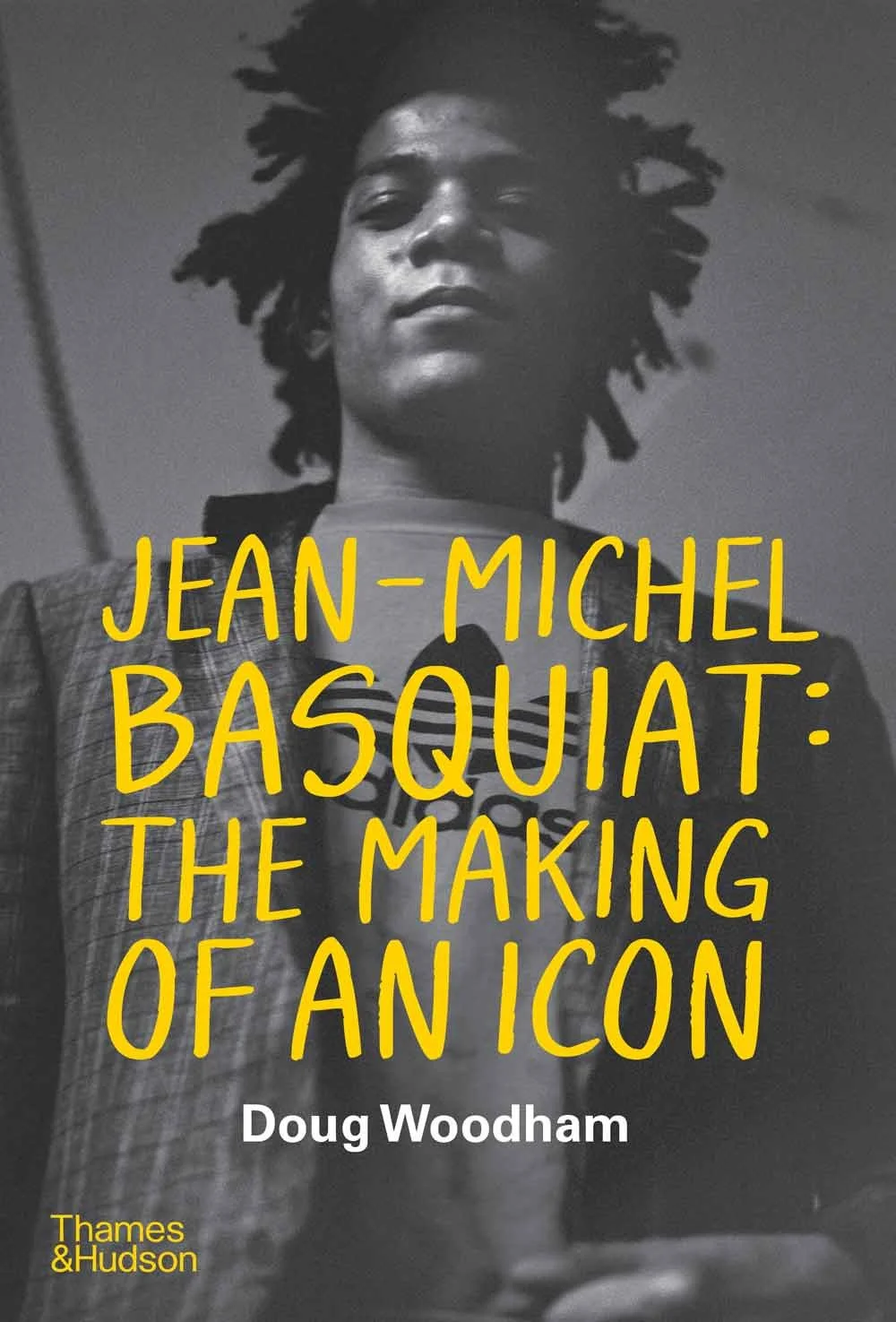
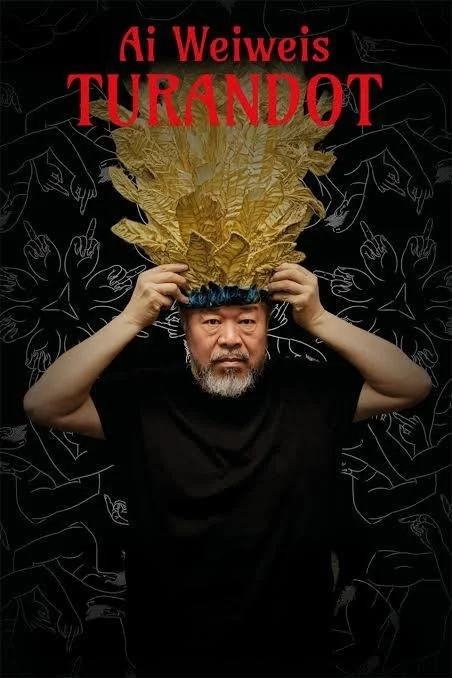



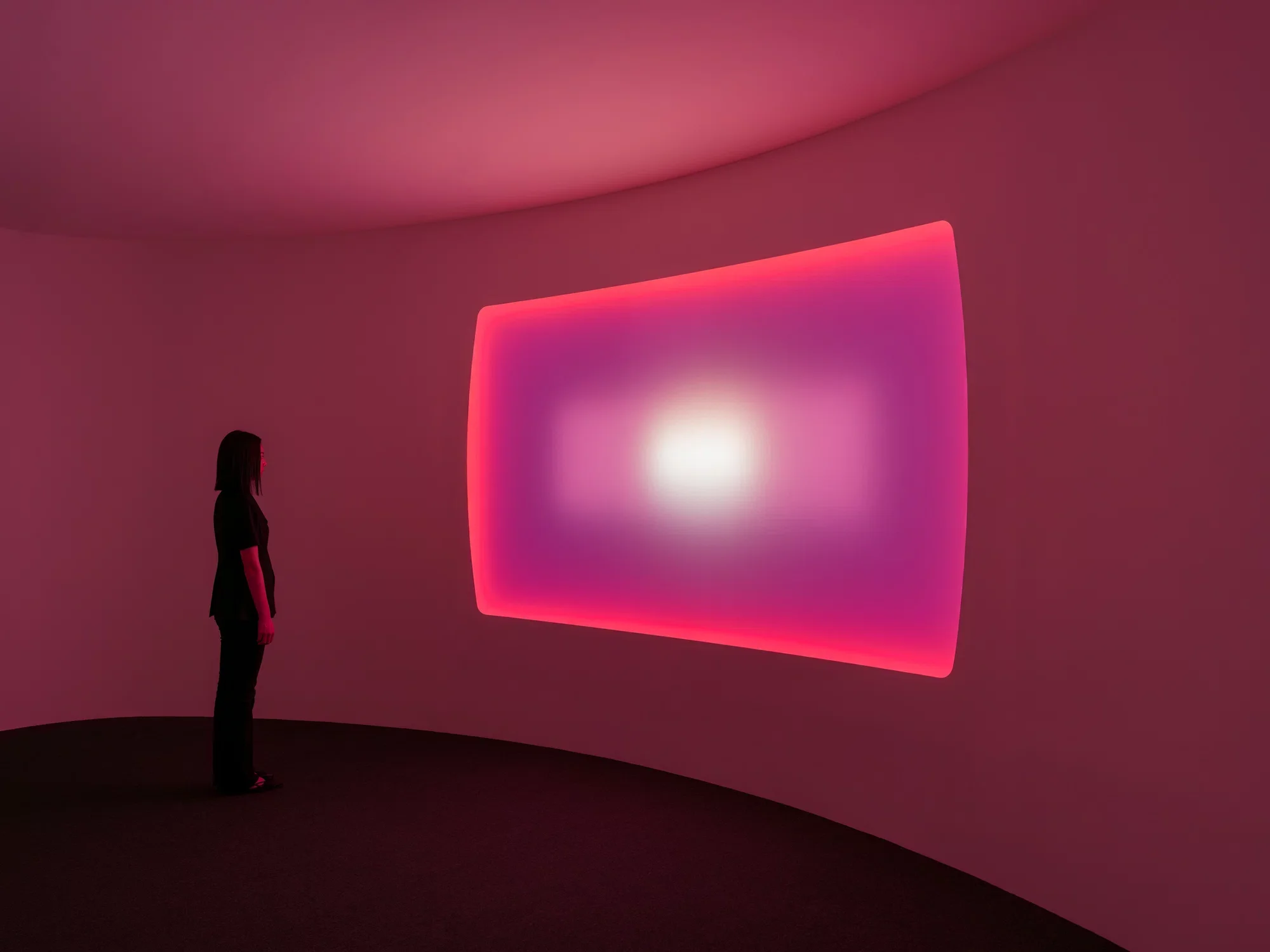



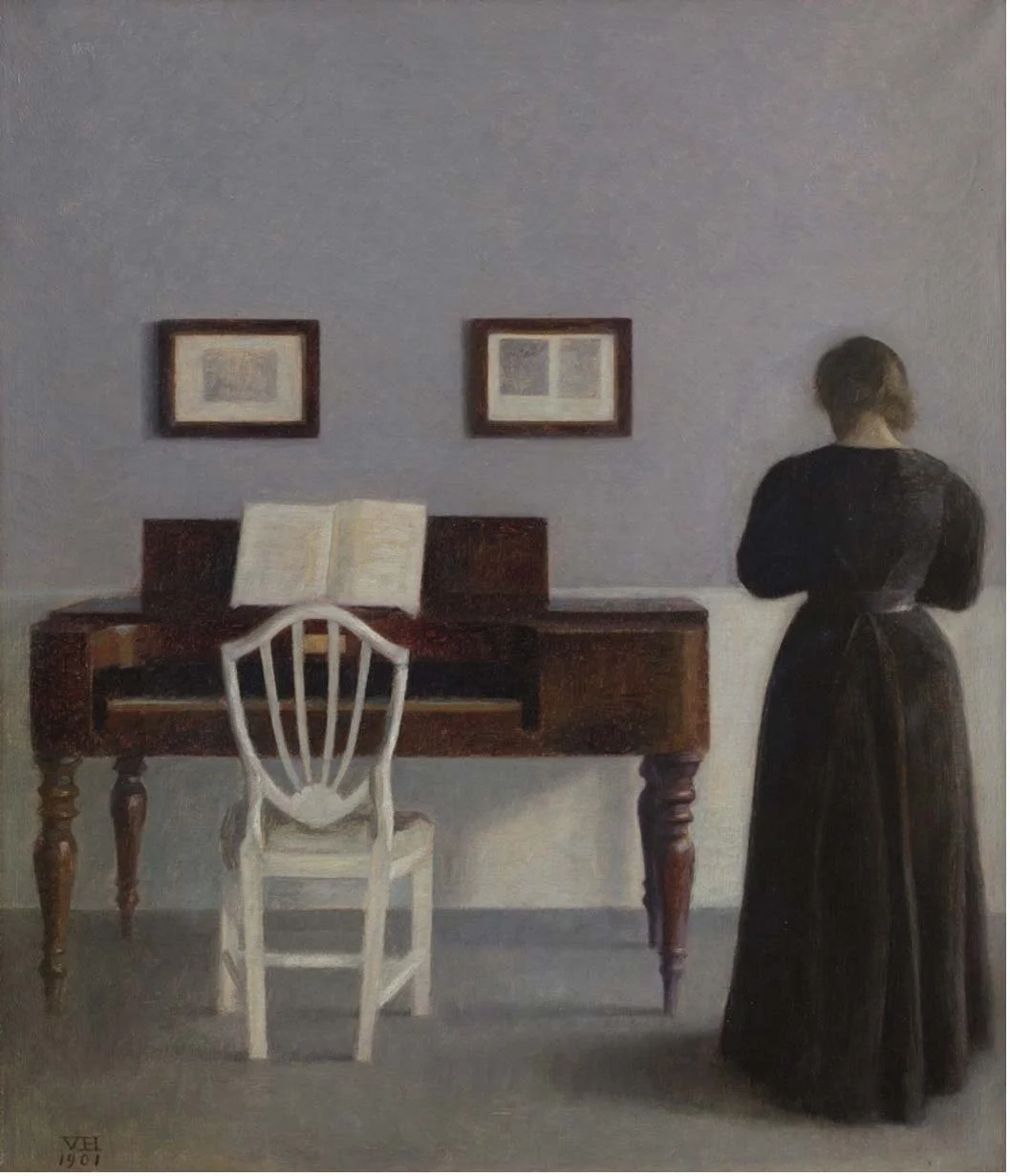


















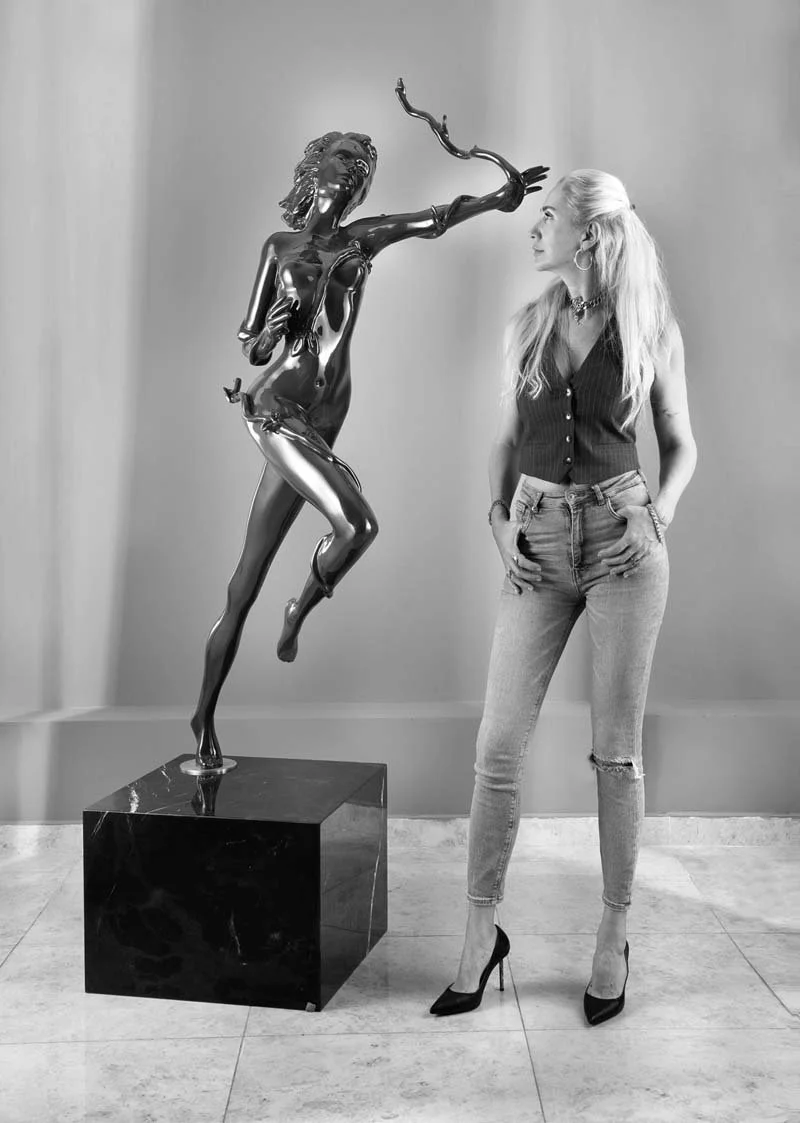




































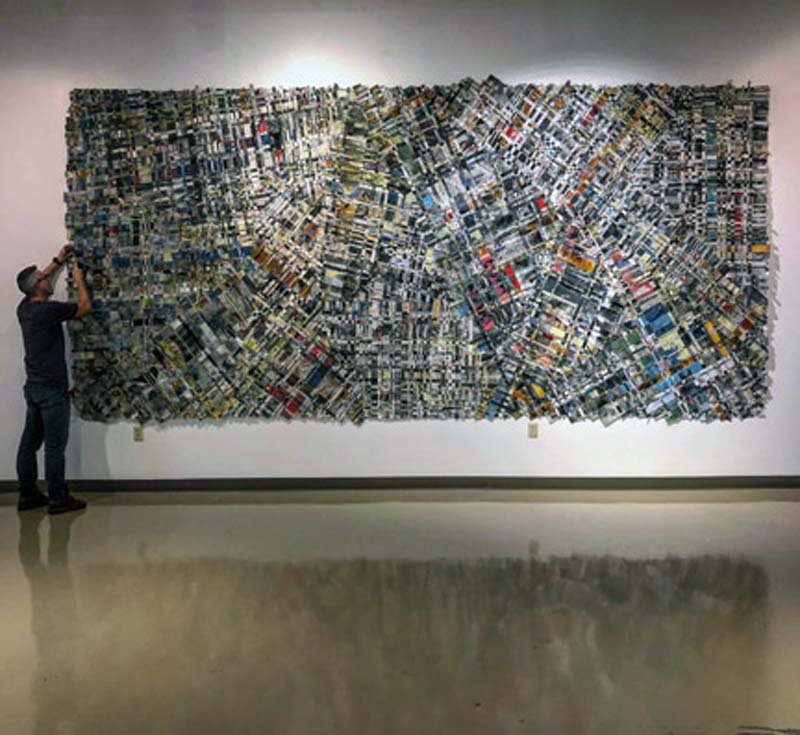







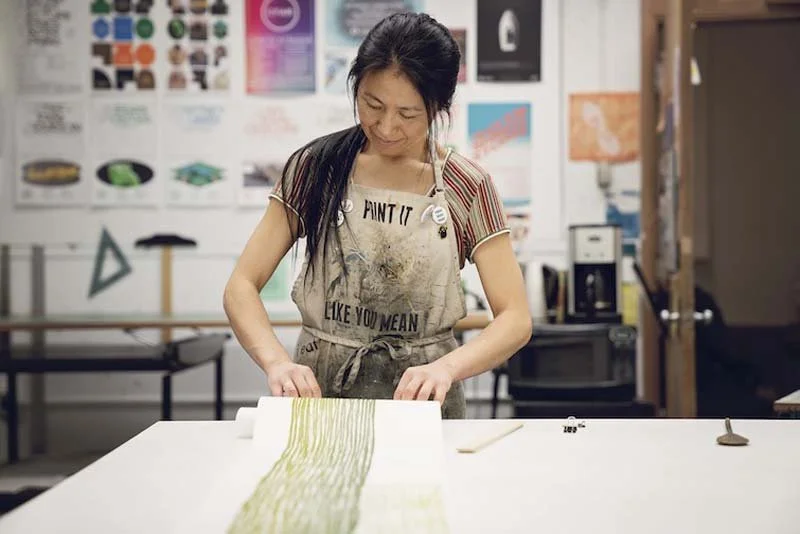


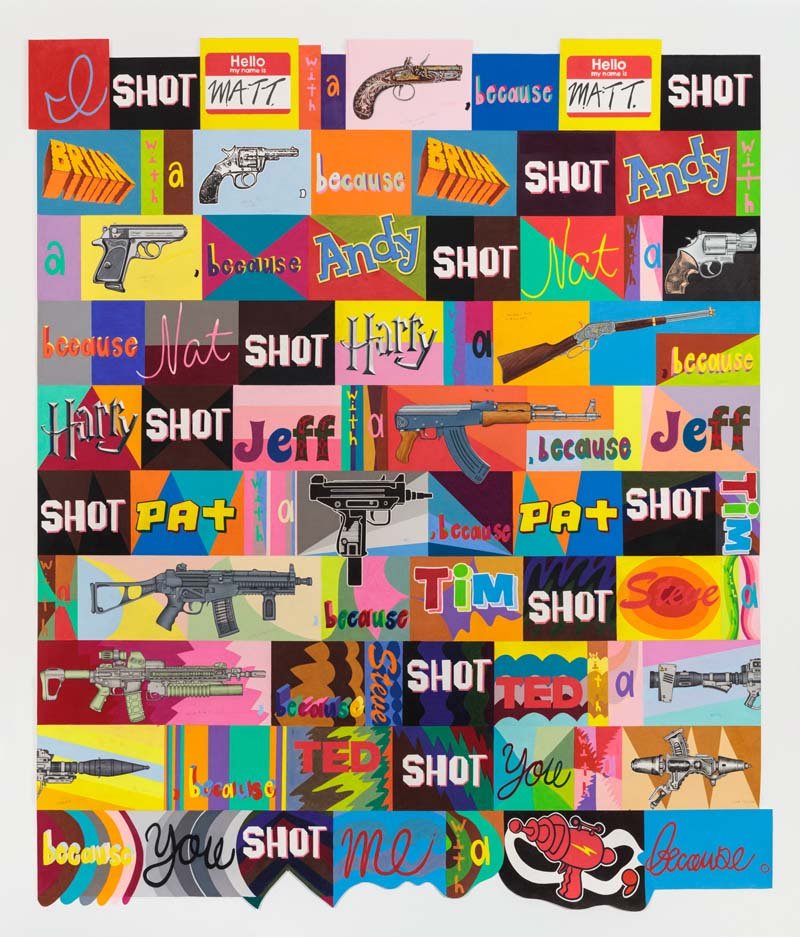


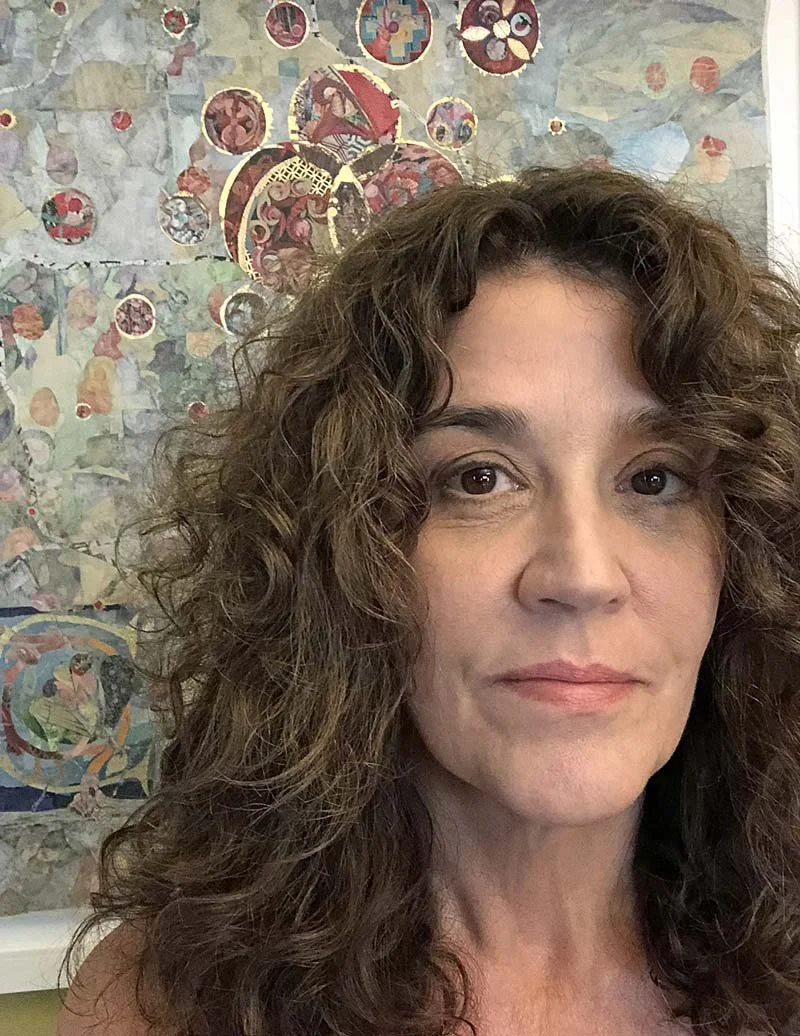







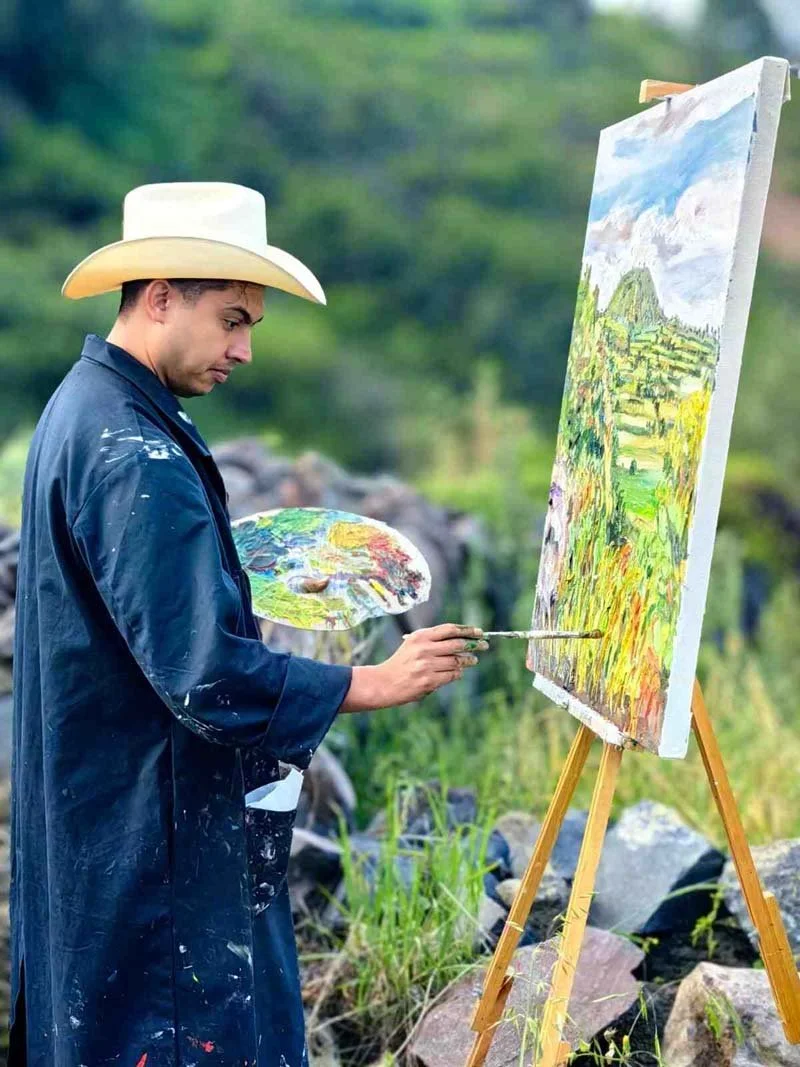

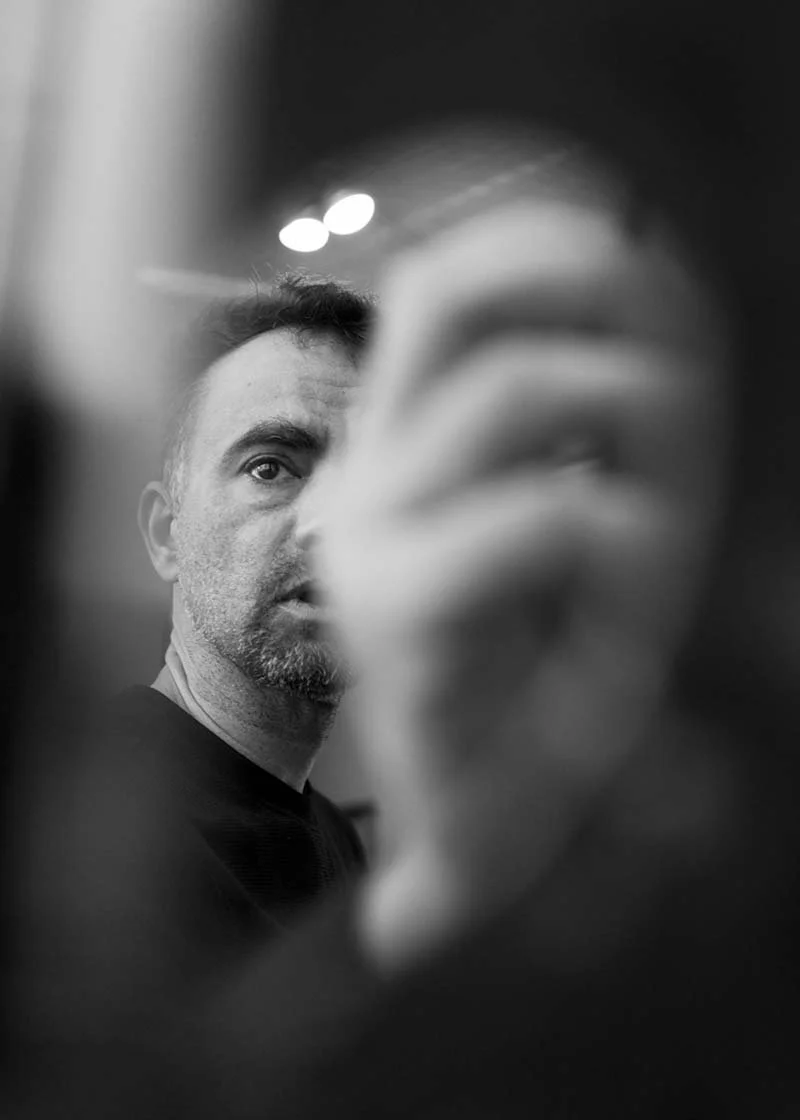

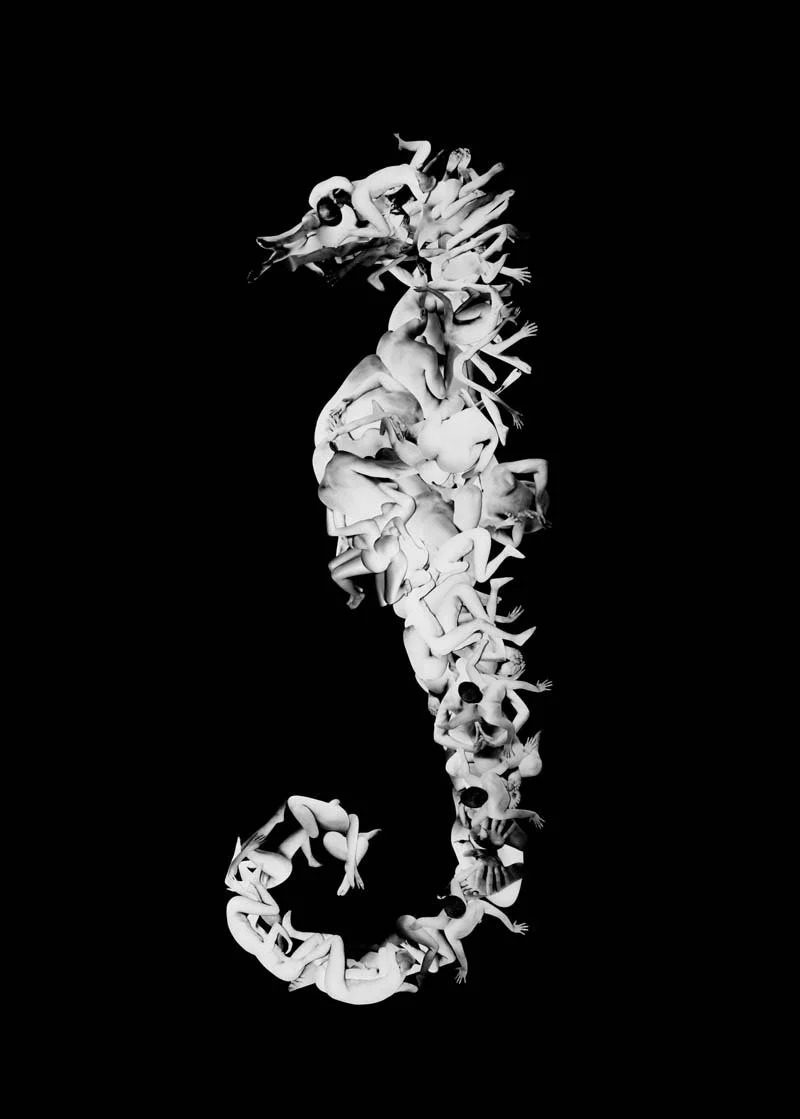



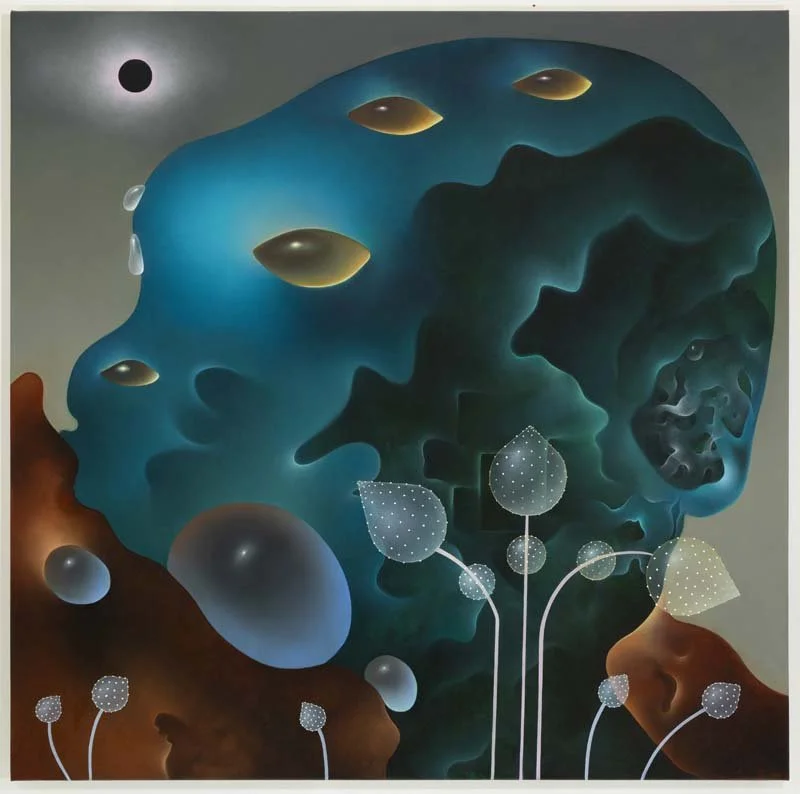






















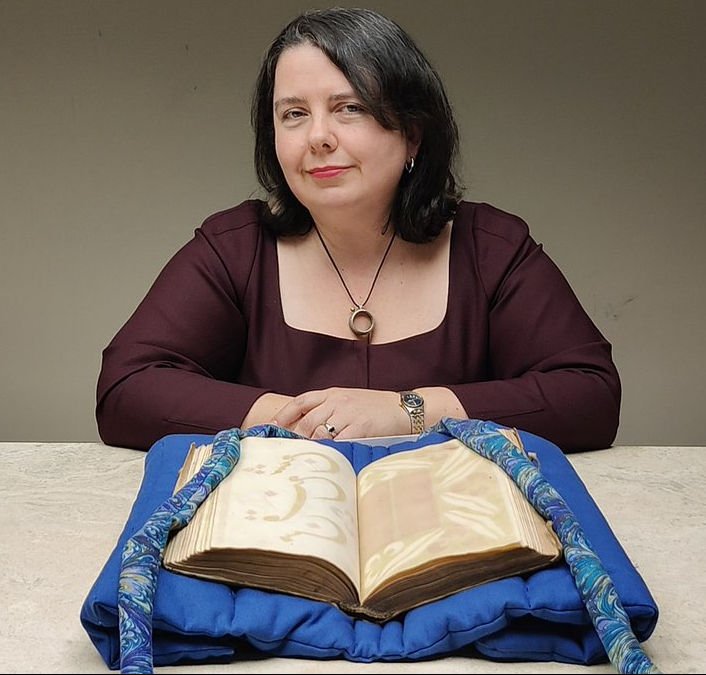
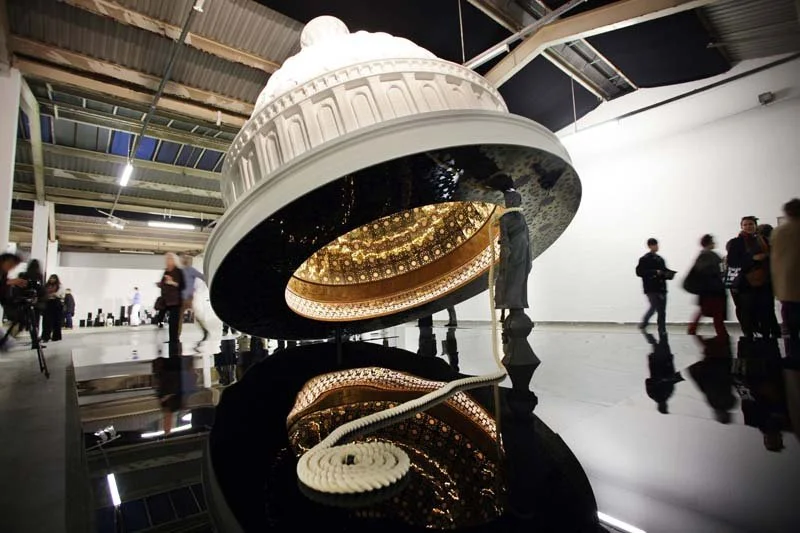



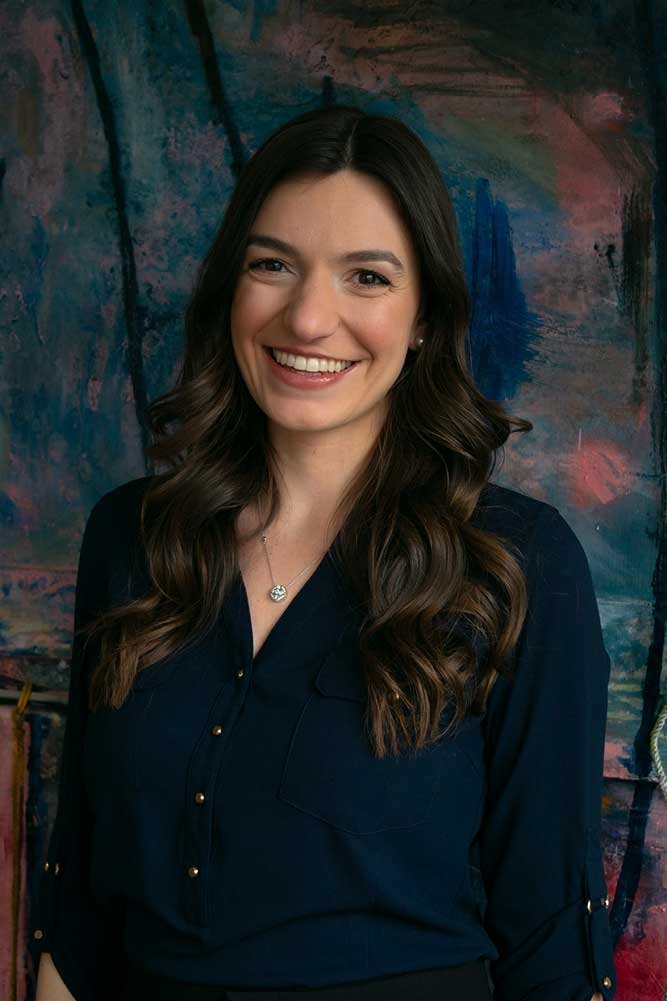










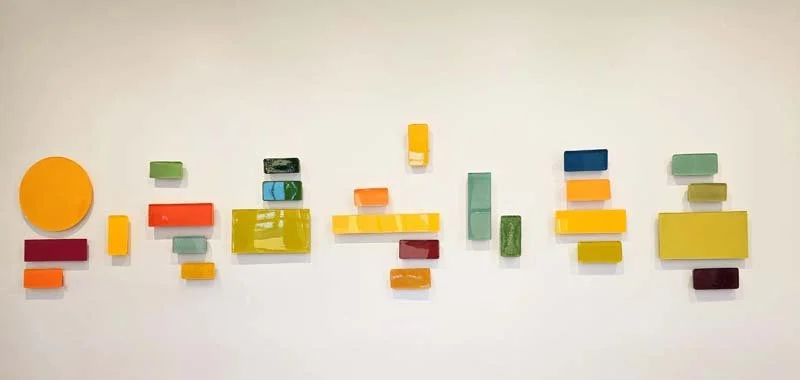


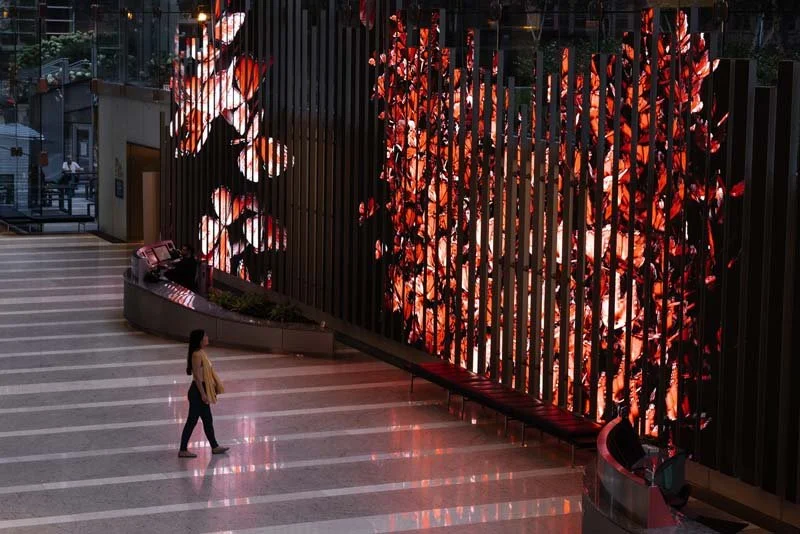









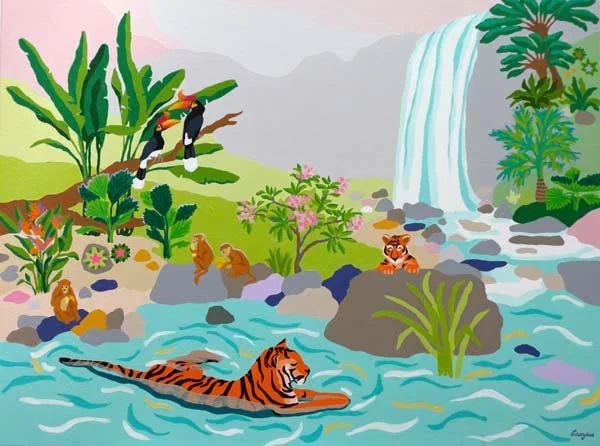
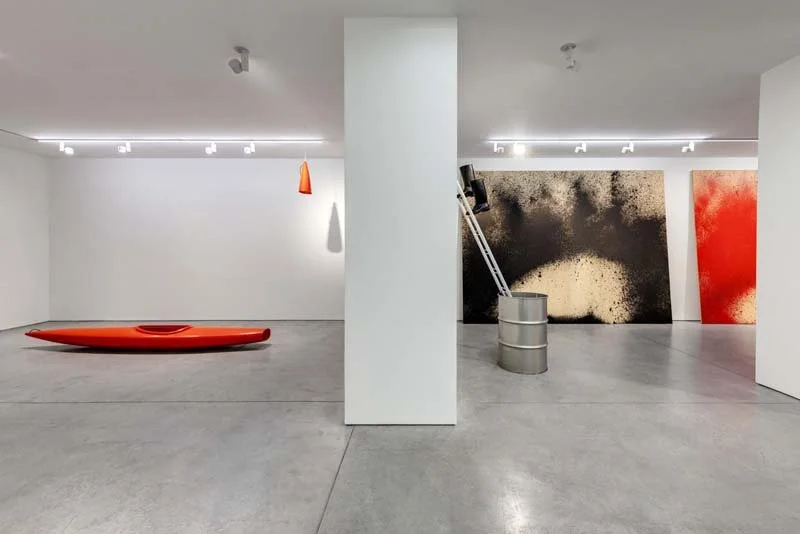
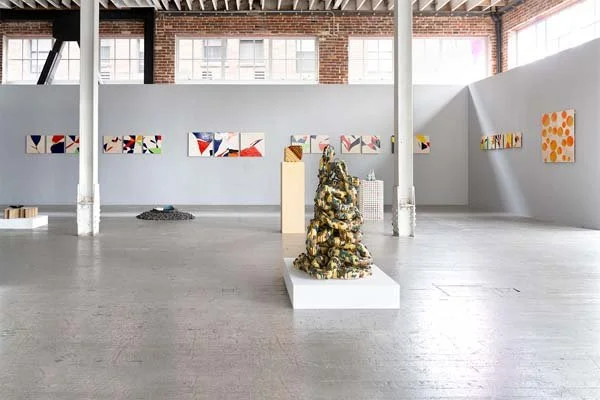


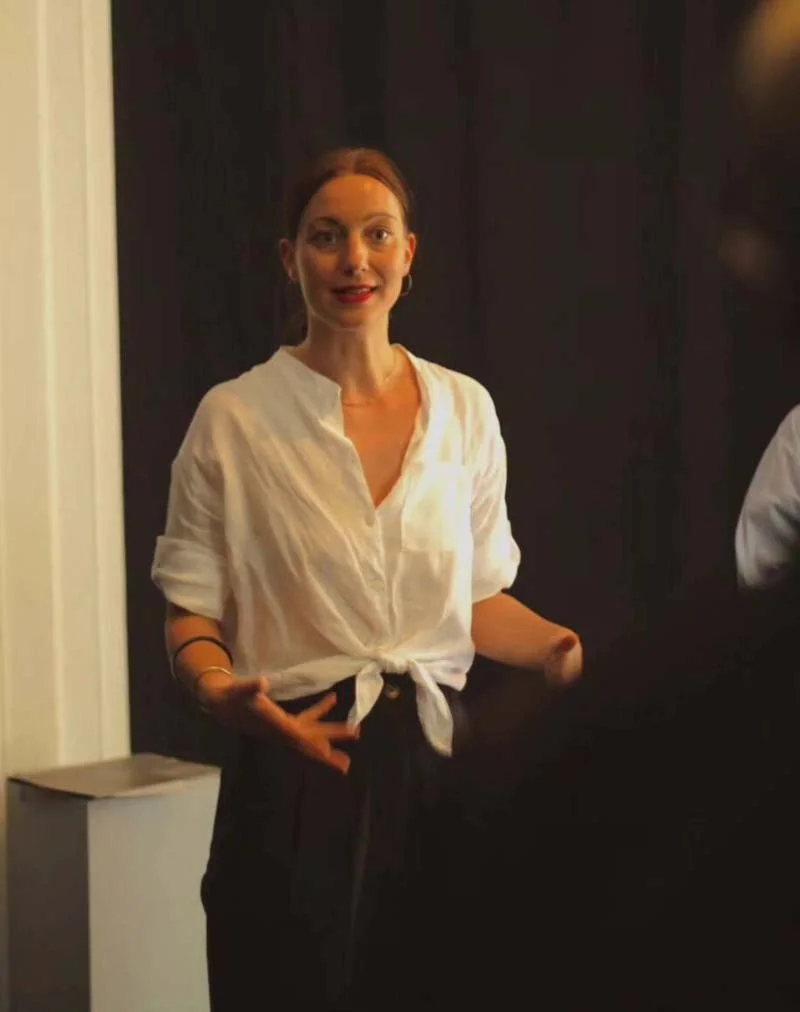




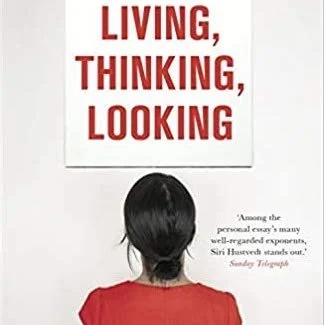








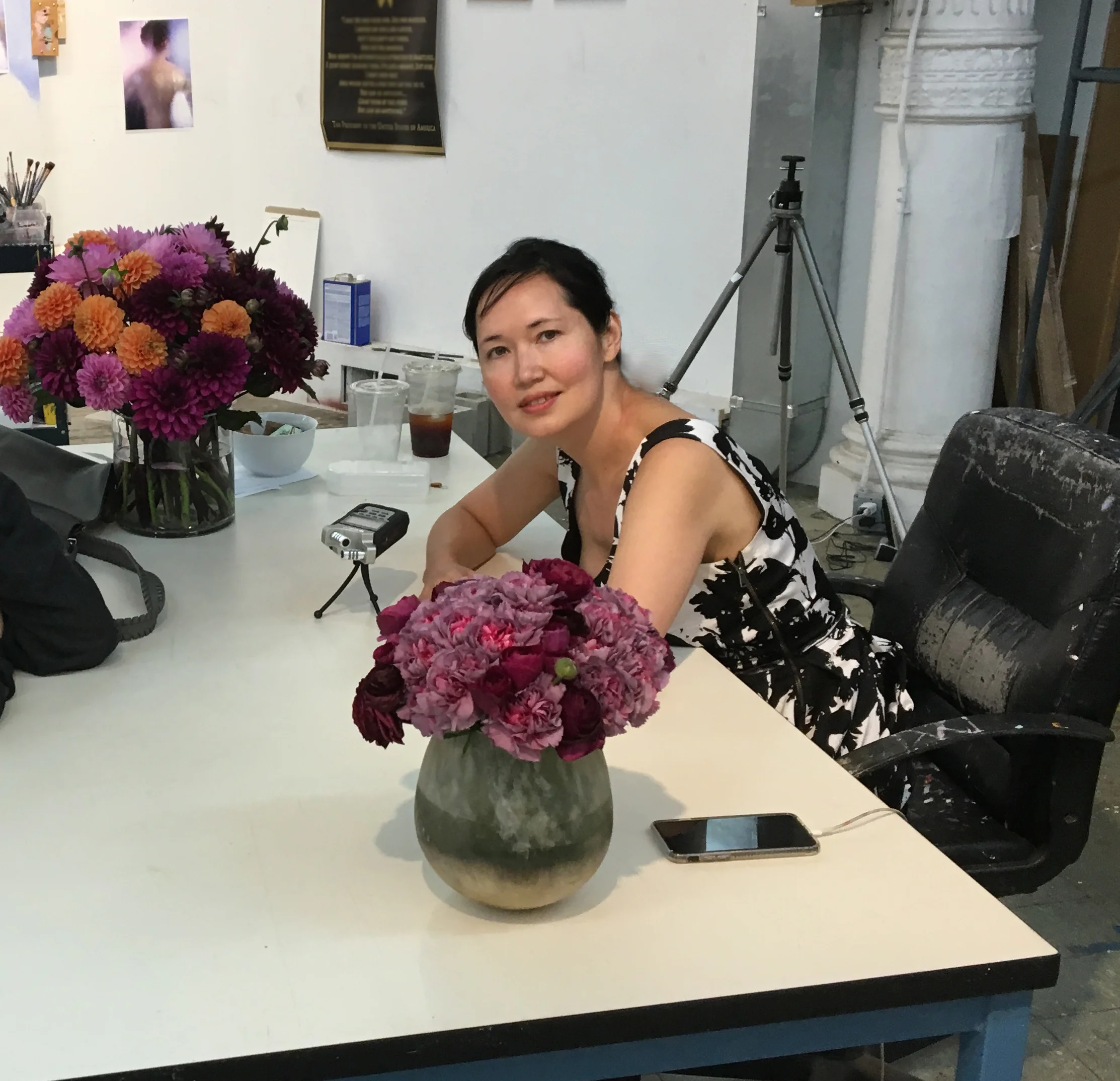







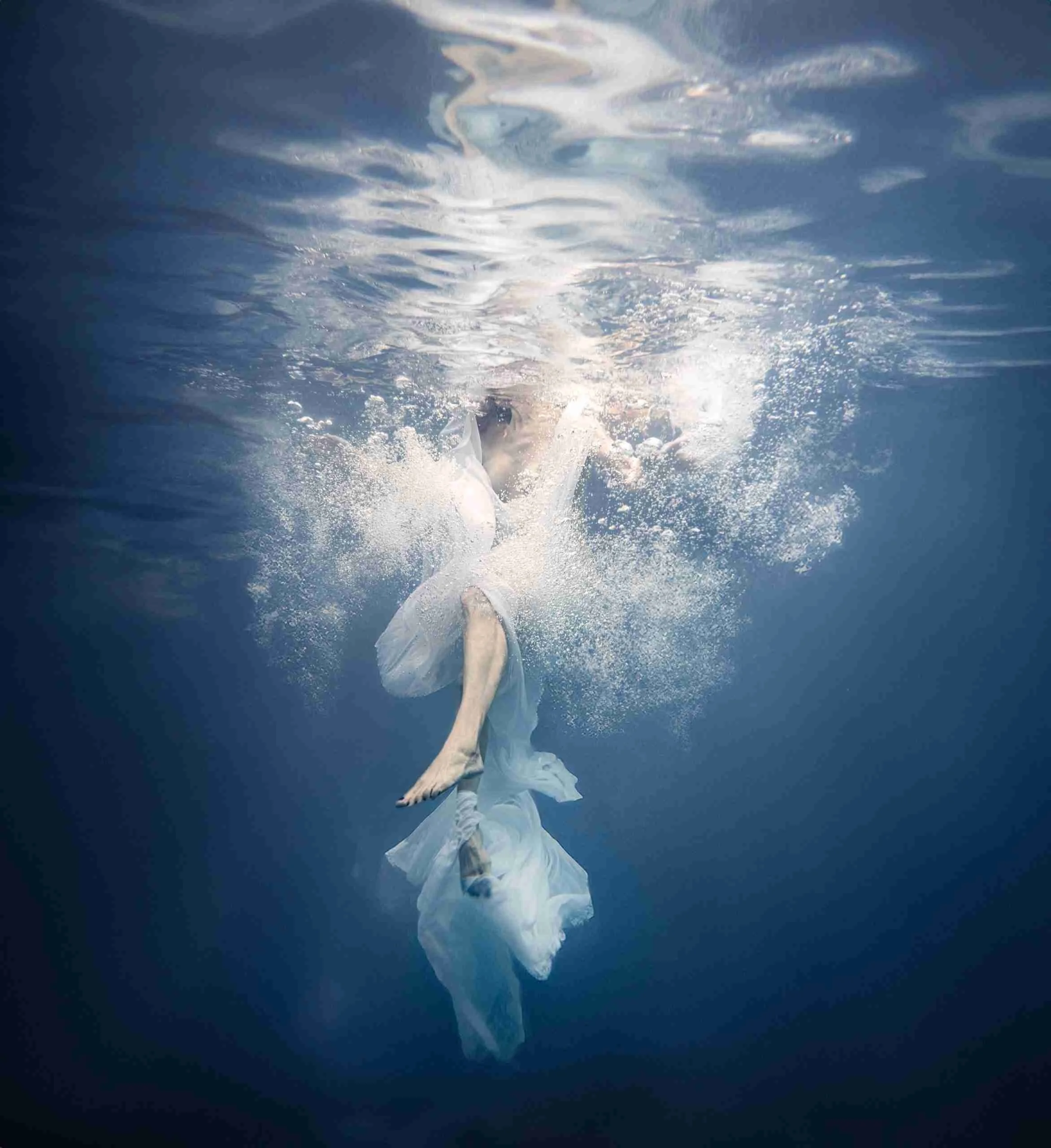
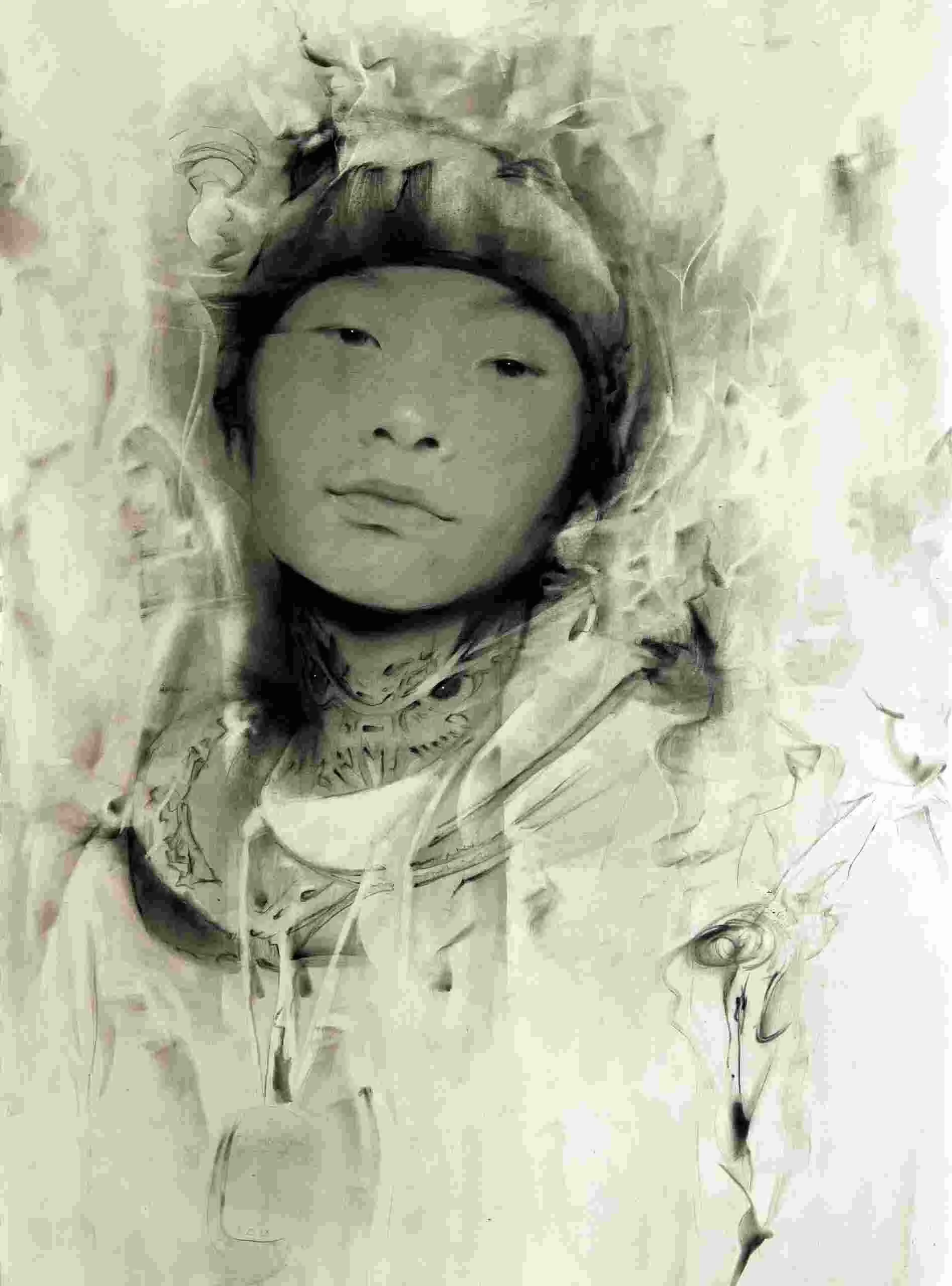
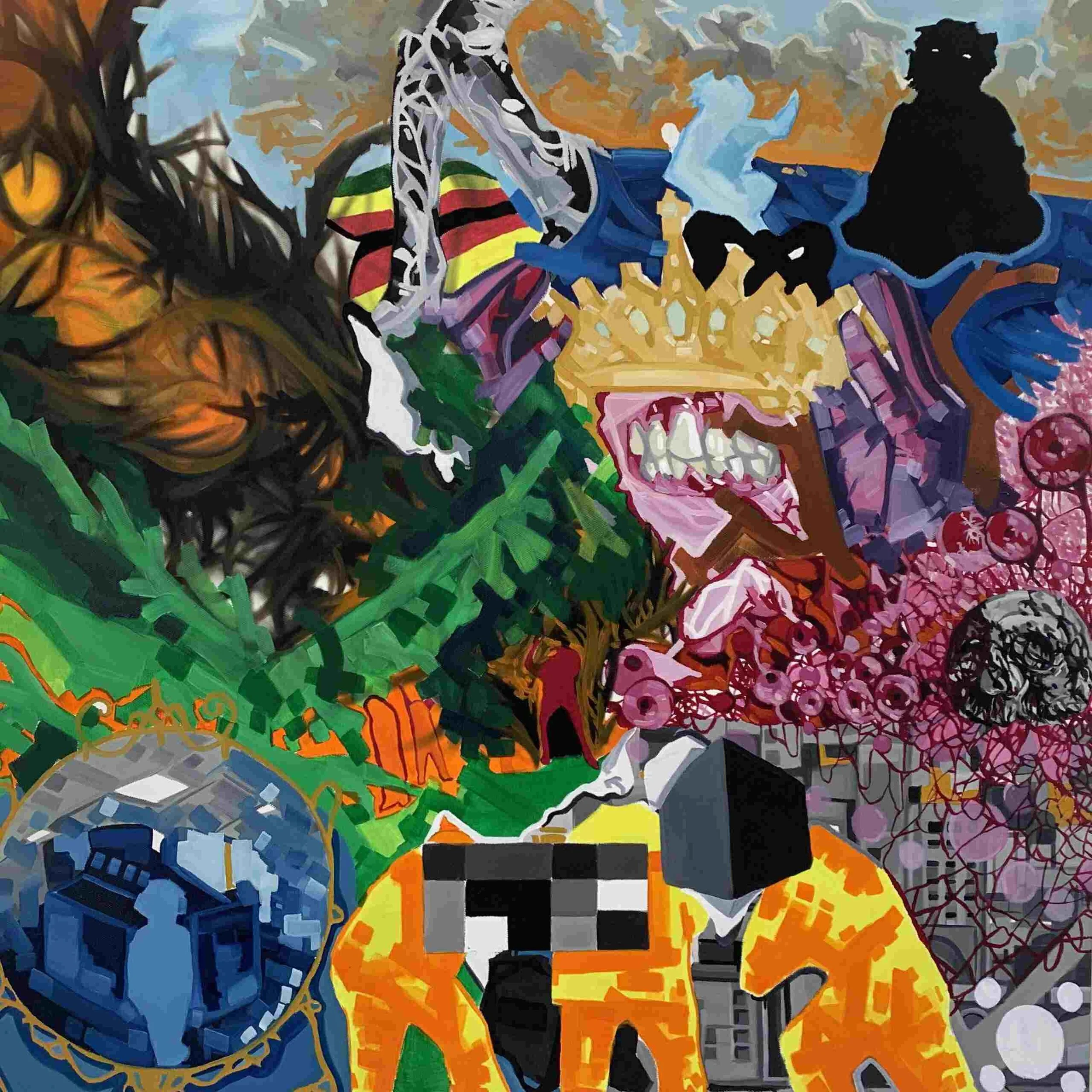



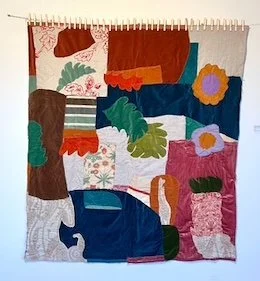
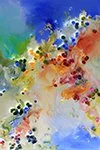



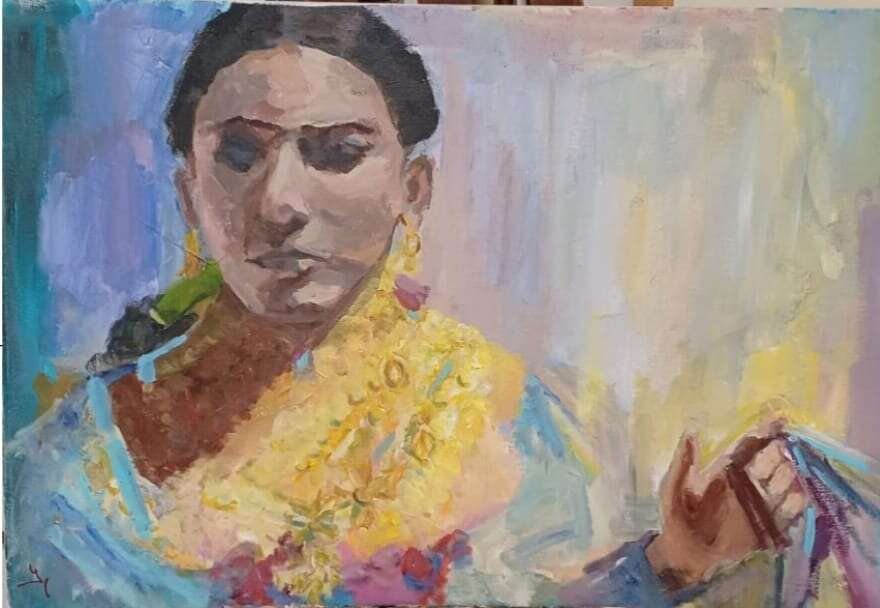

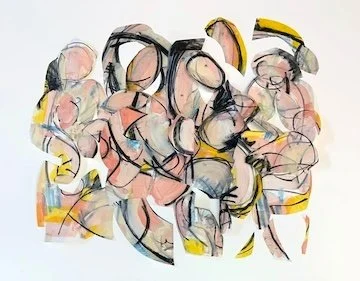

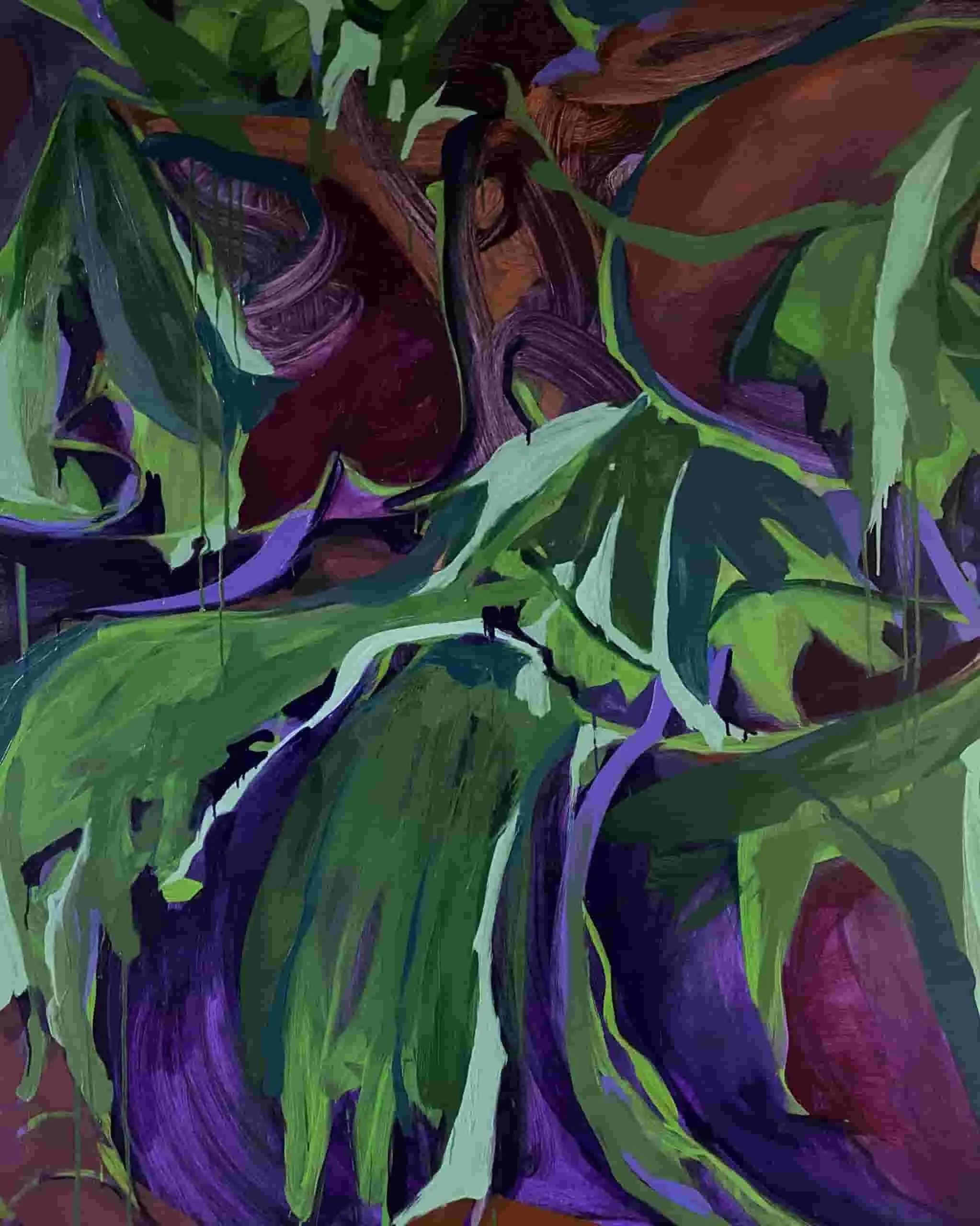

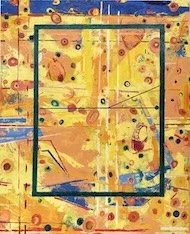
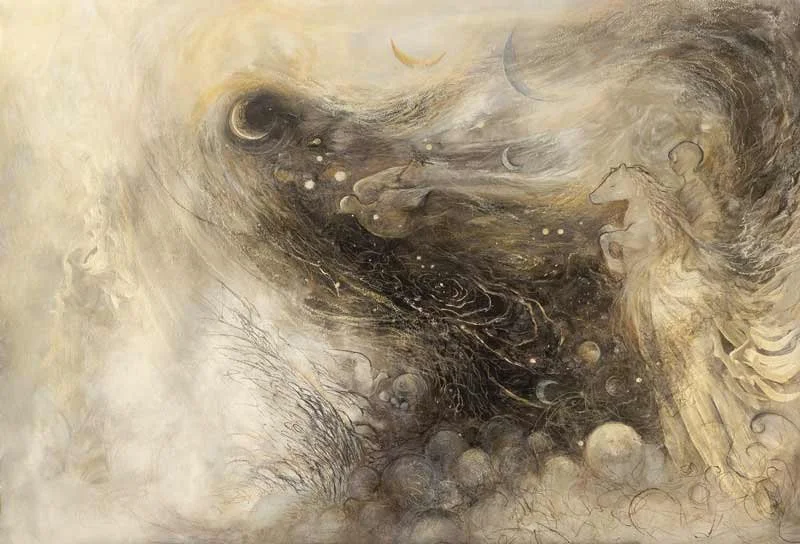








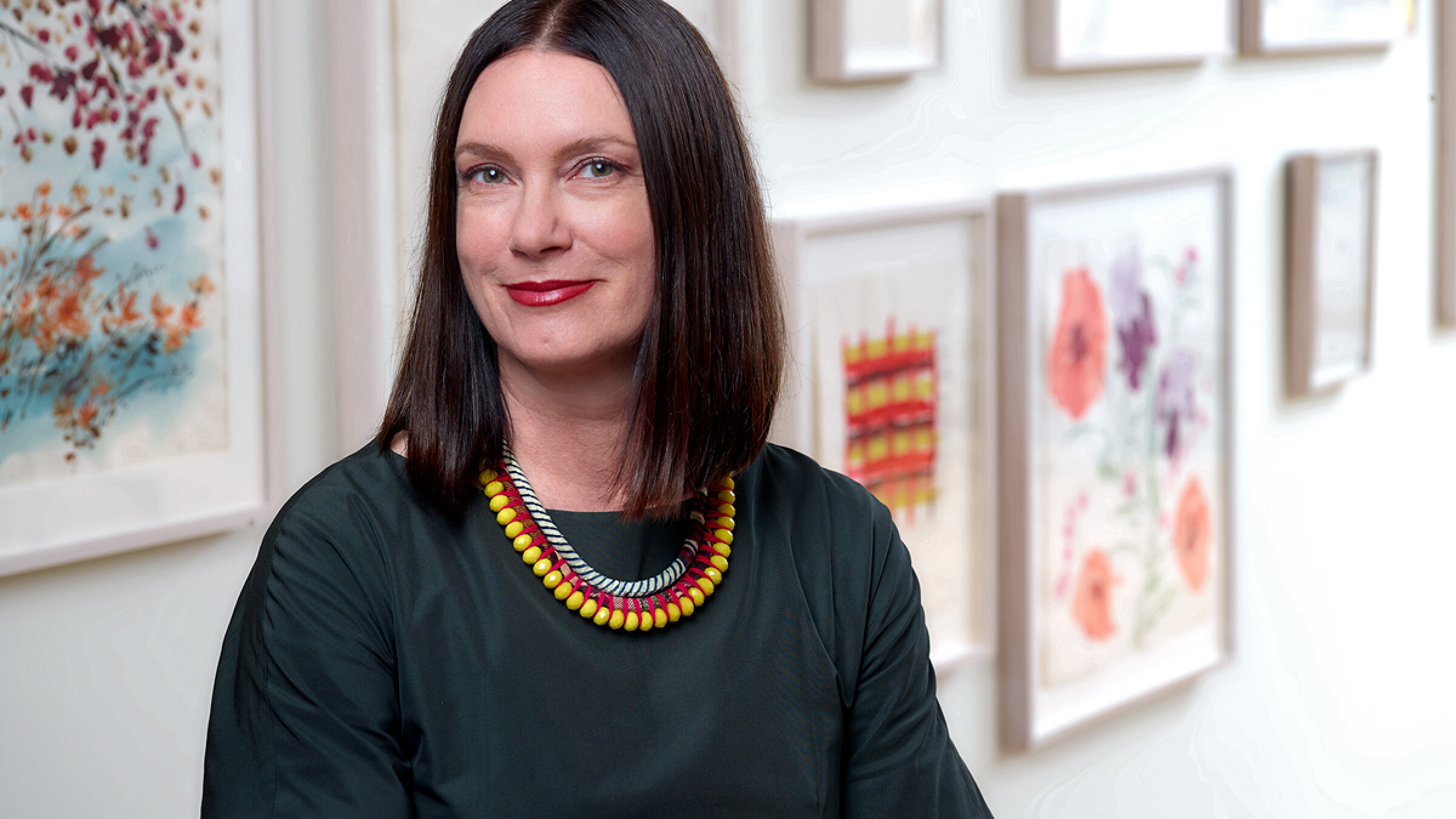






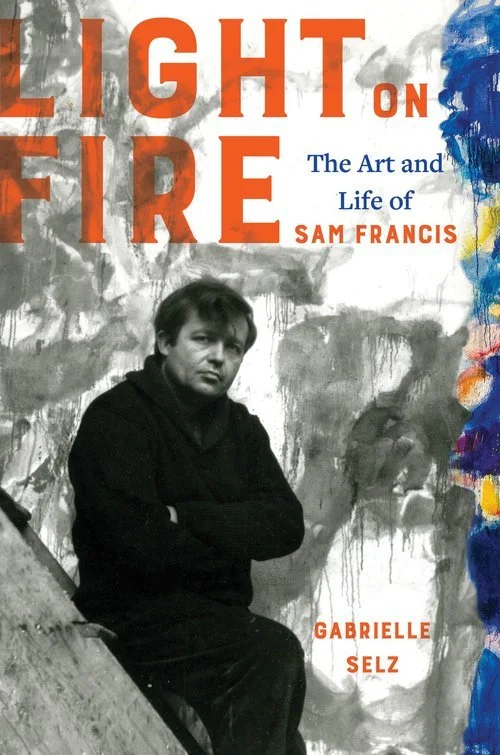



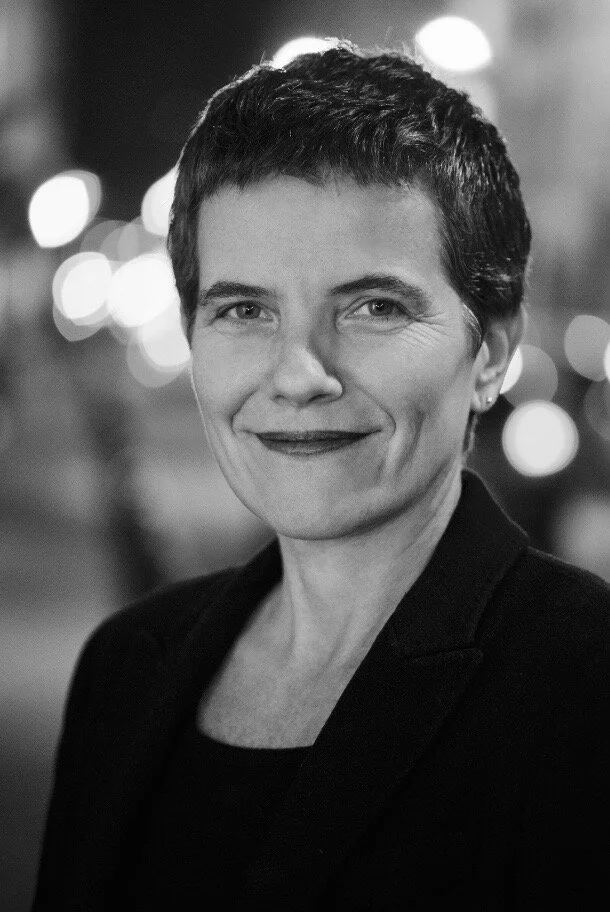



A Conversation with Artist MICHELLE BIRD
My aim is to create a kind of magic with my alchemy. I hope that people connect with the whimsy that nature presents us, and that my work will remind us that the magic of nature is real and we all have the ability to be alchemists. My paintings should open up their dreamworlds.